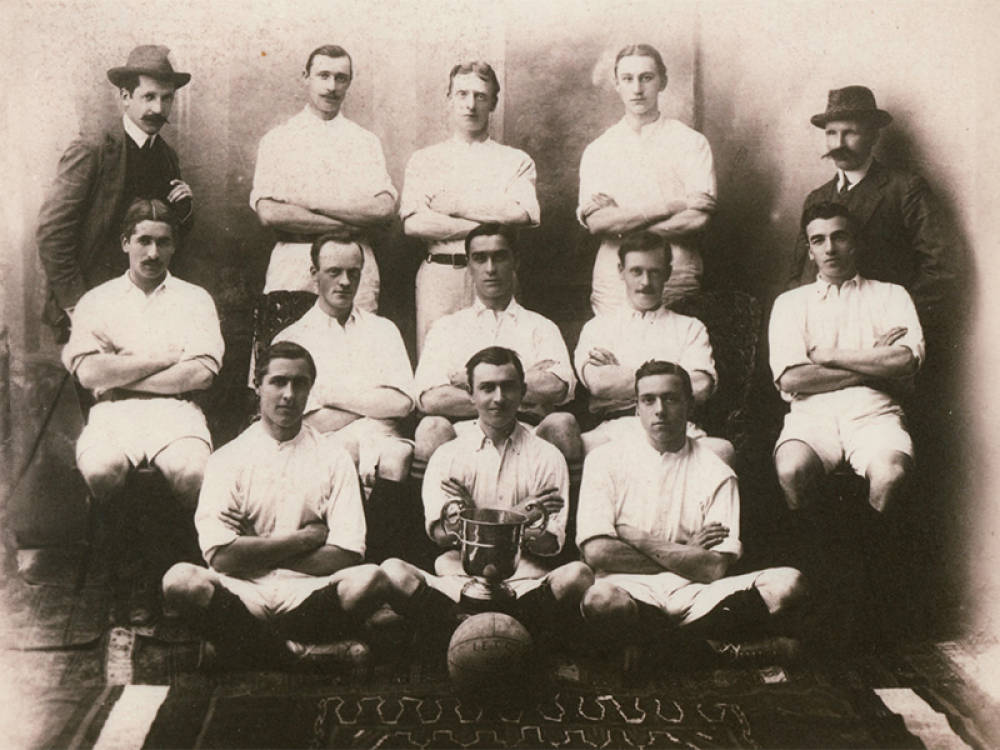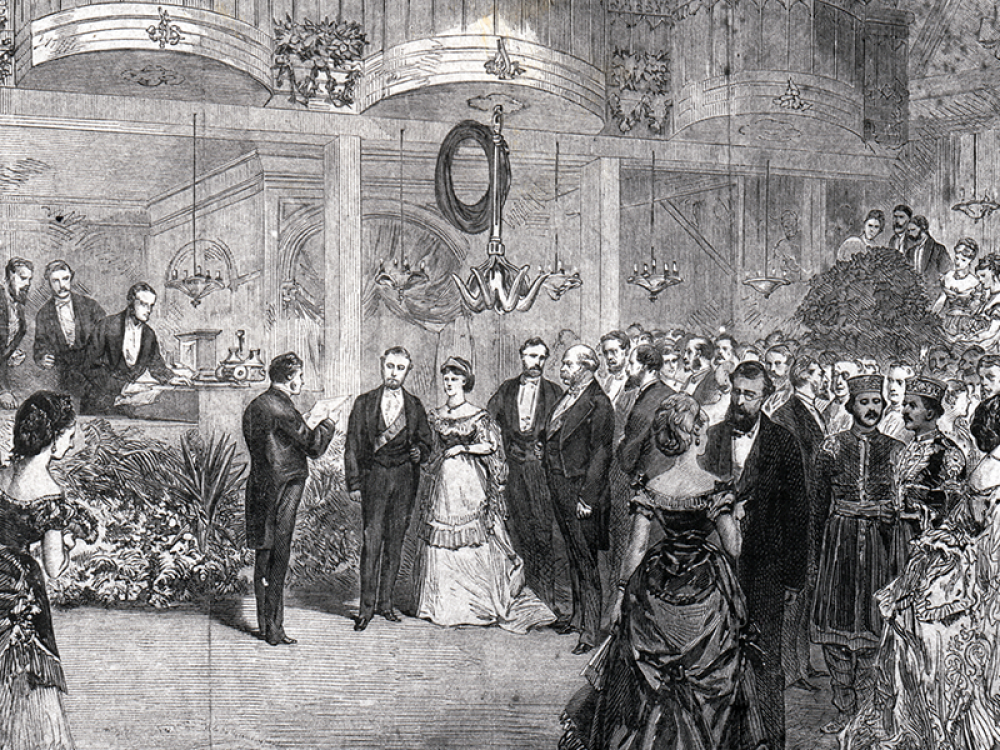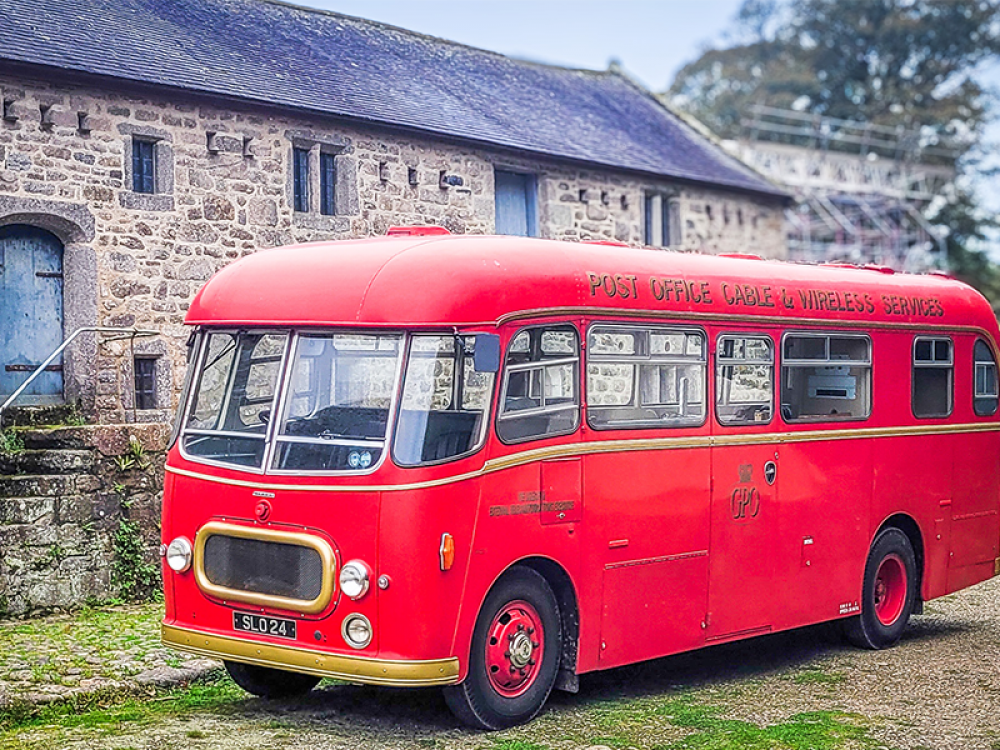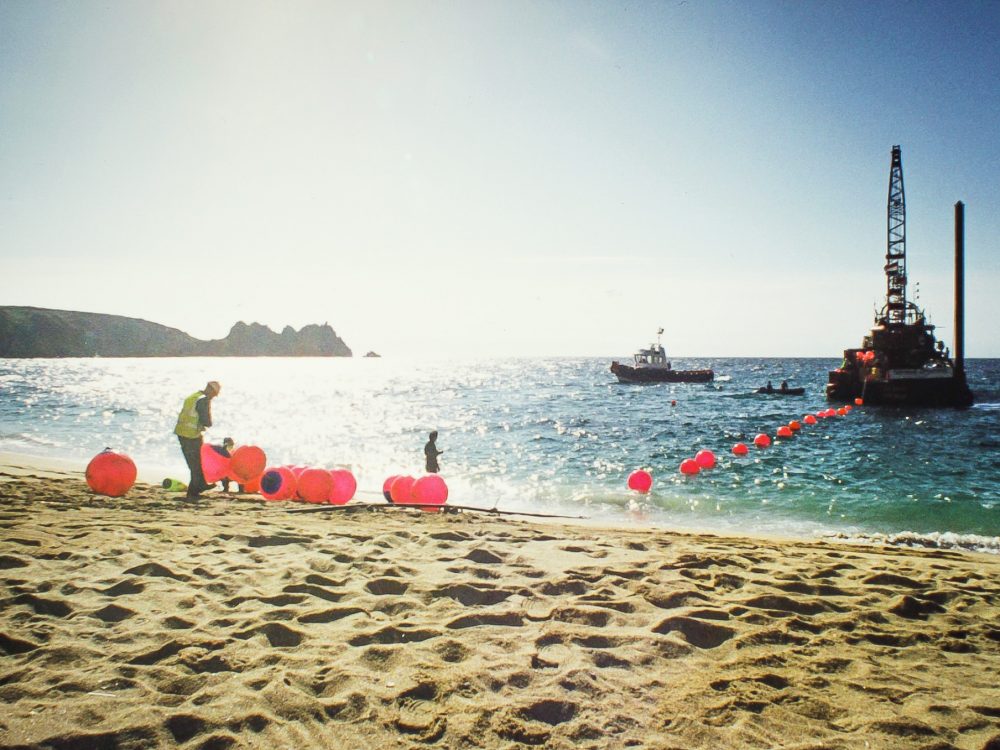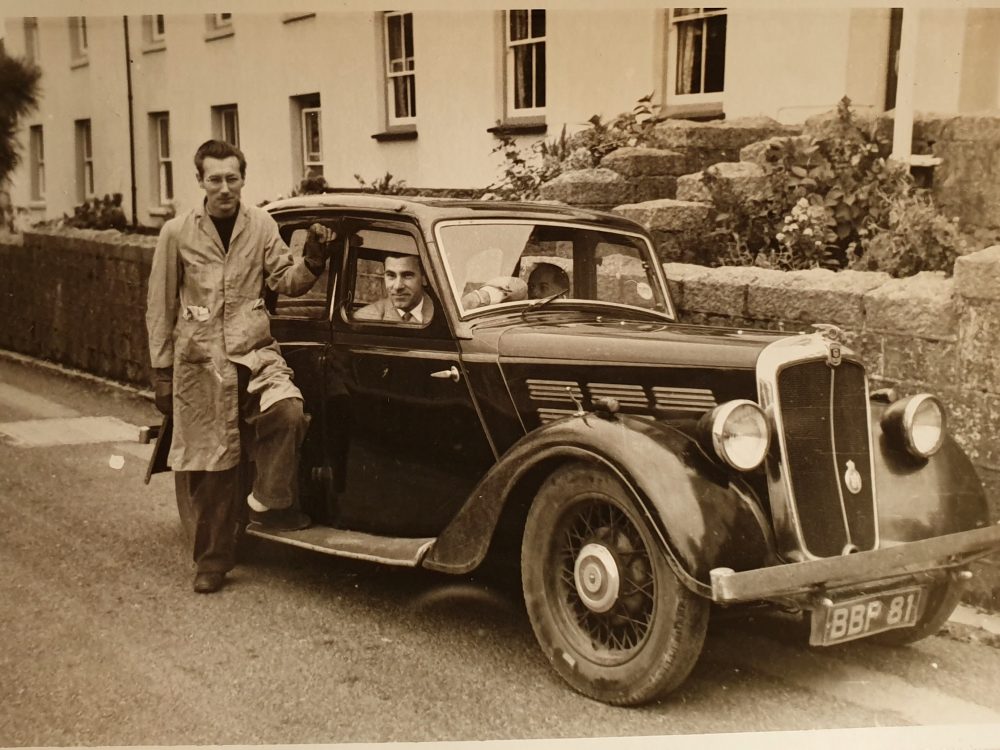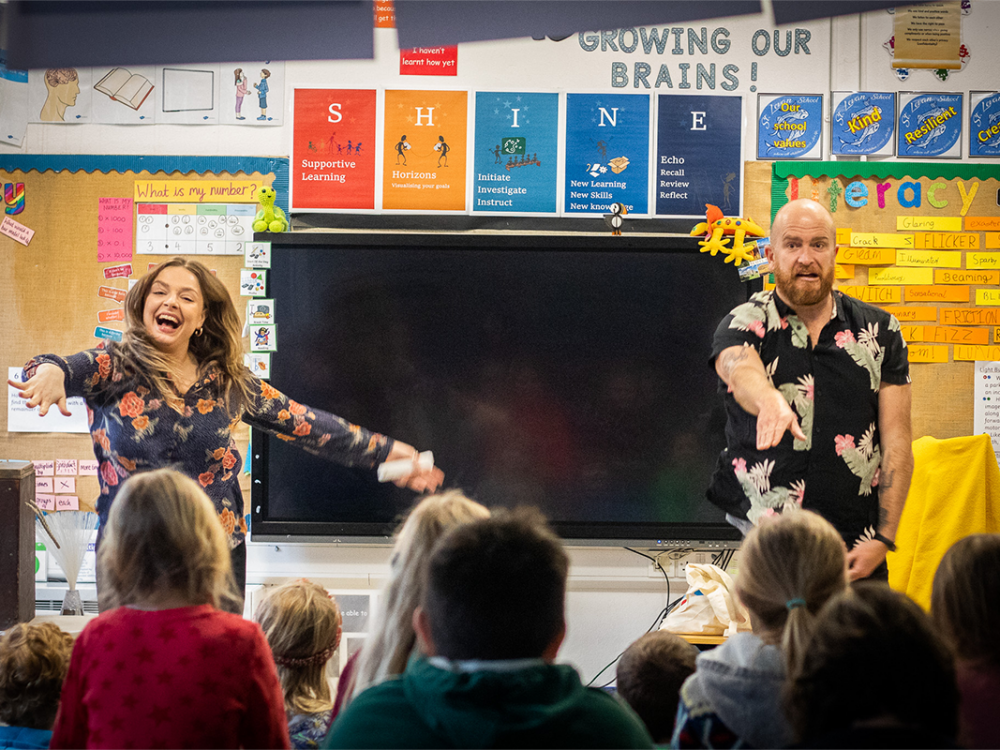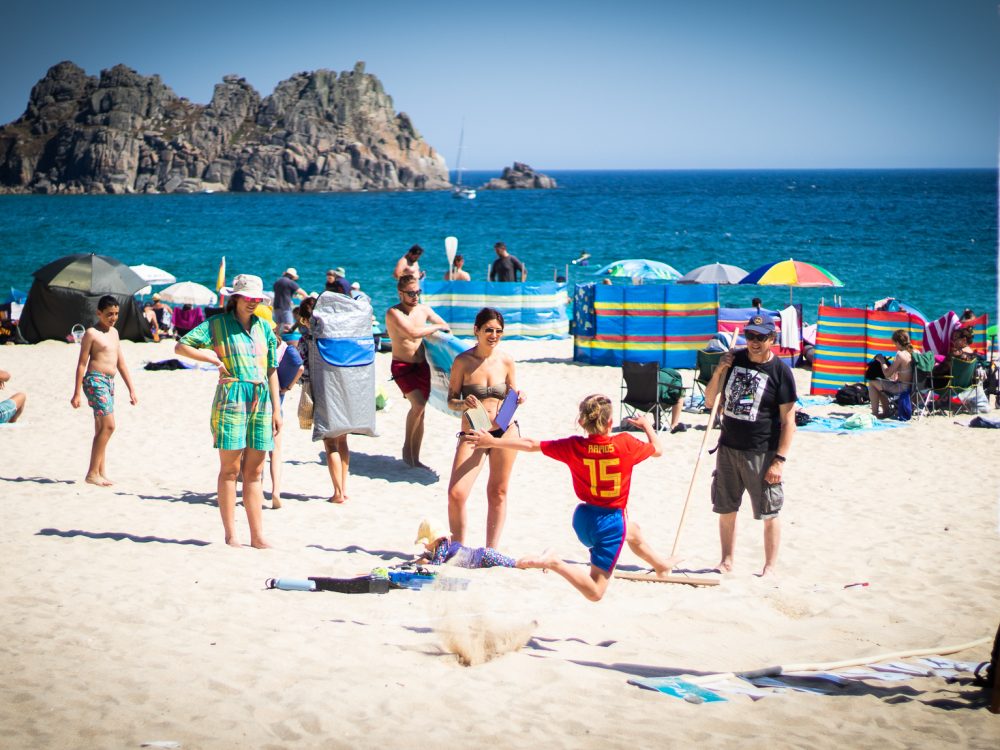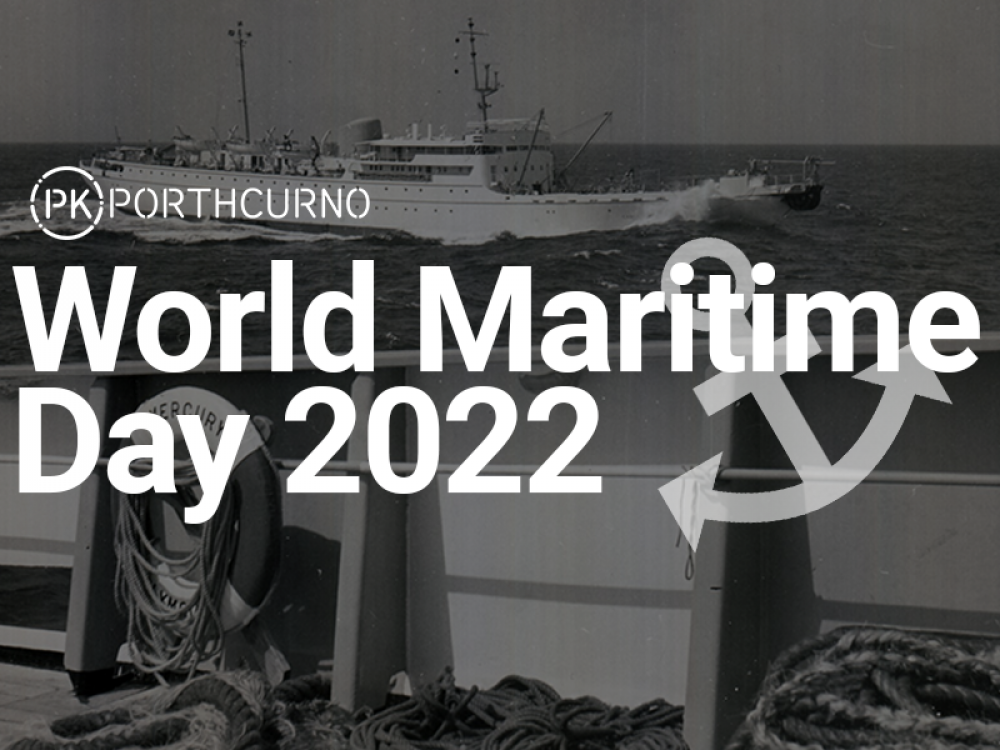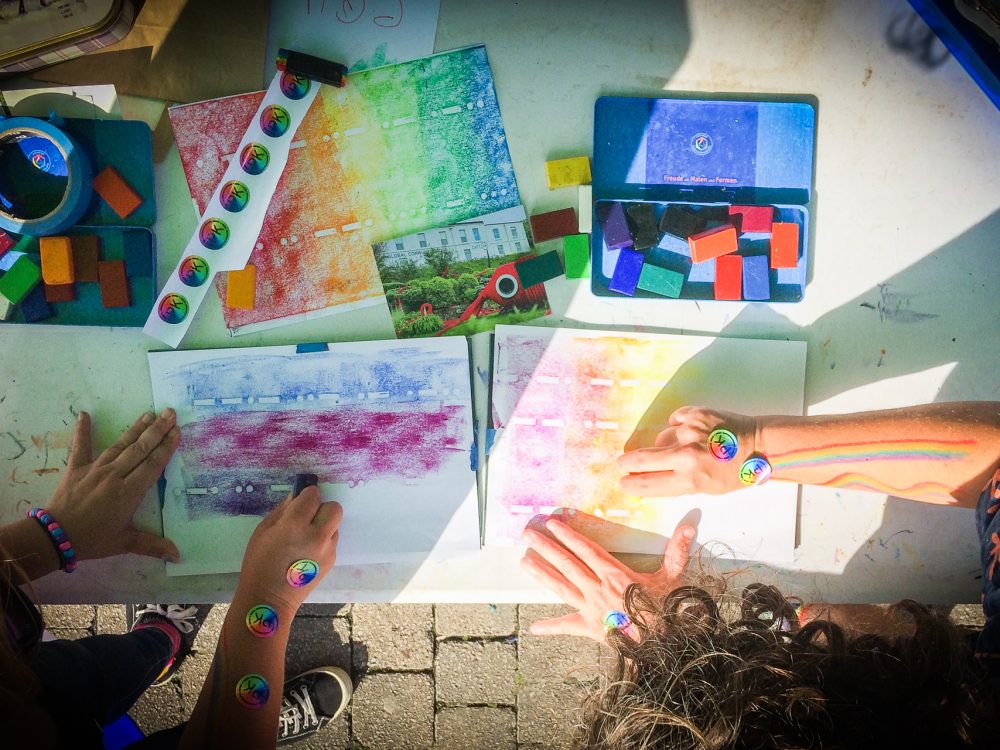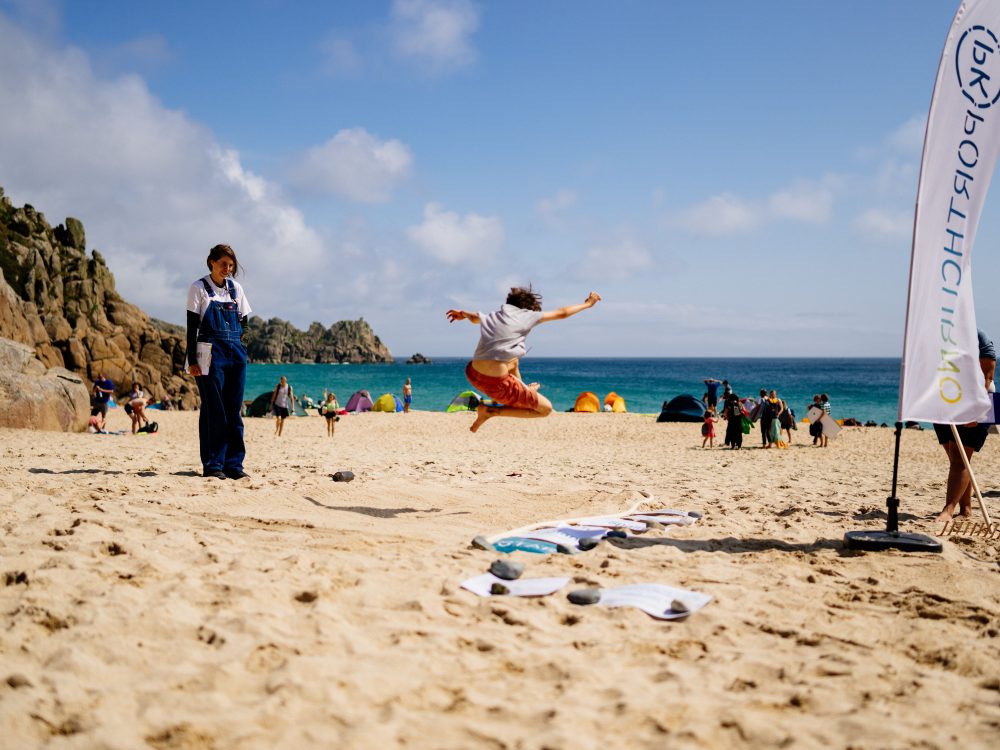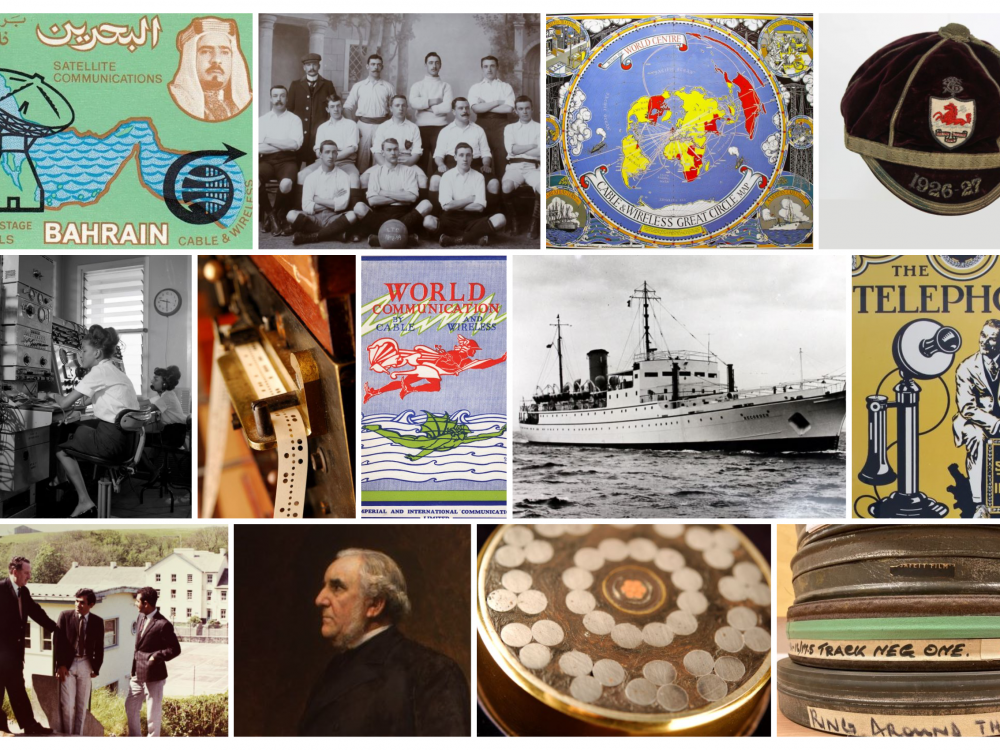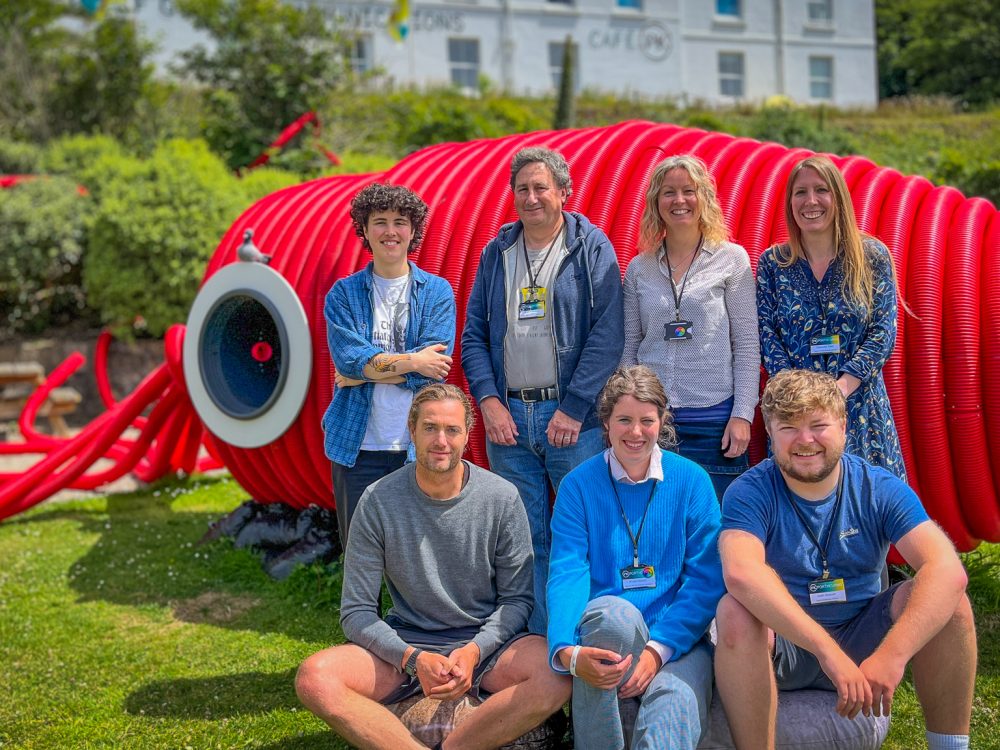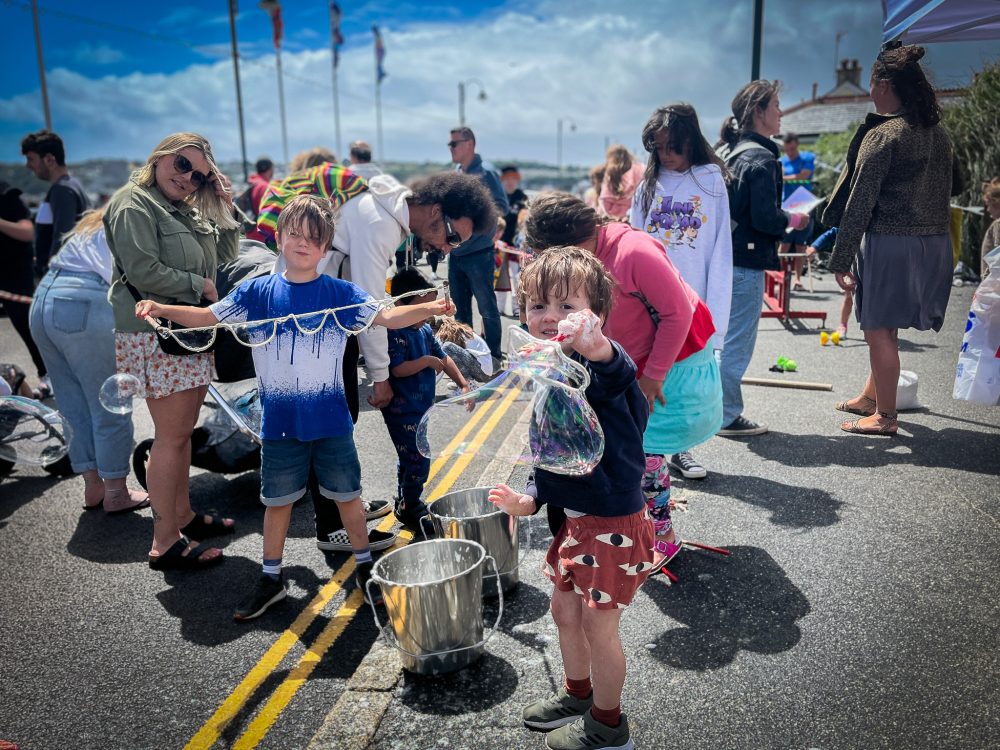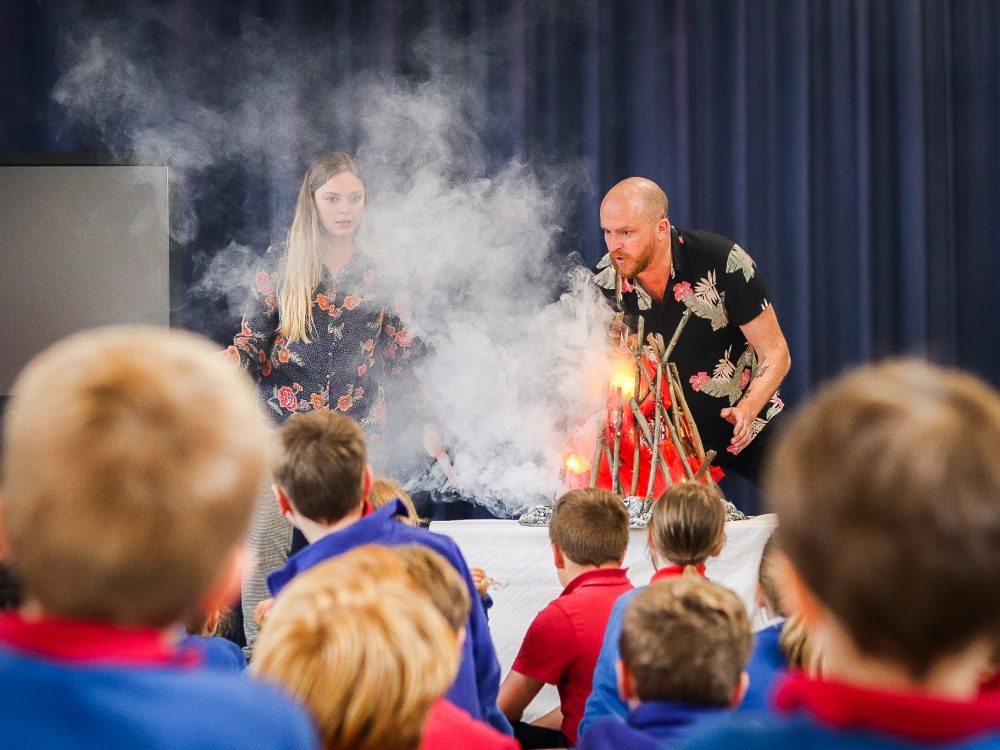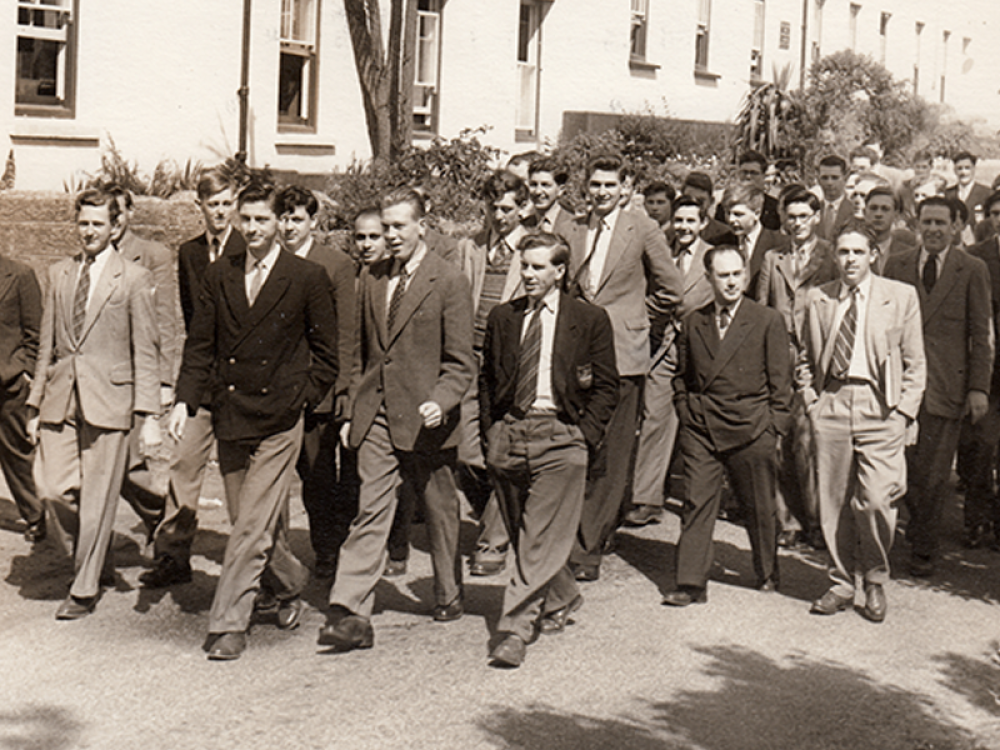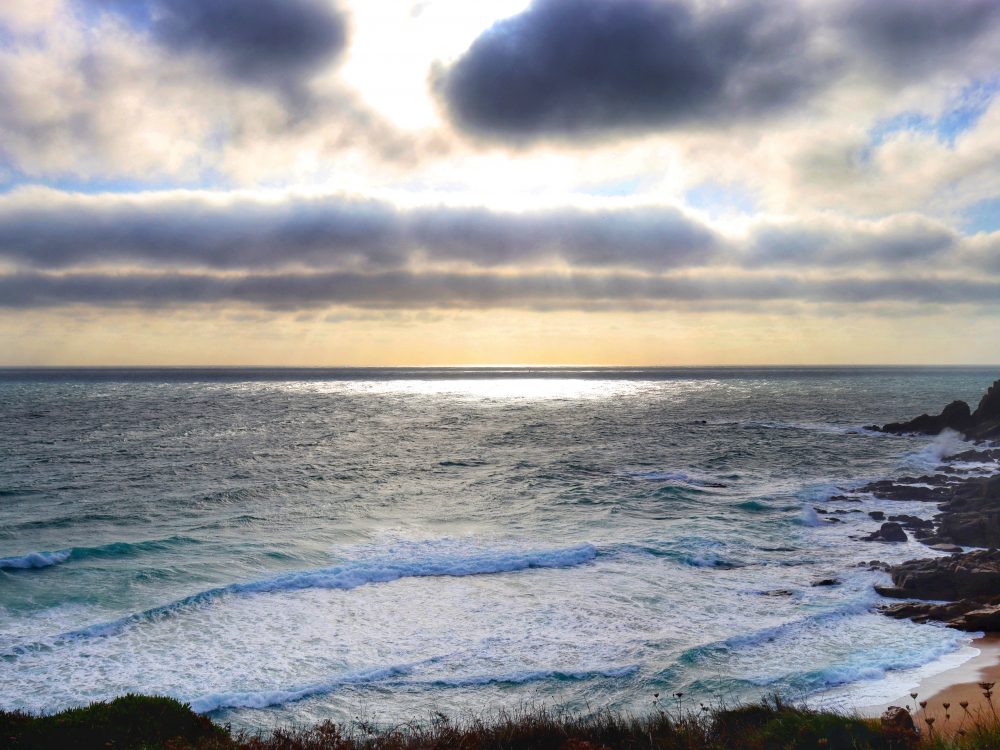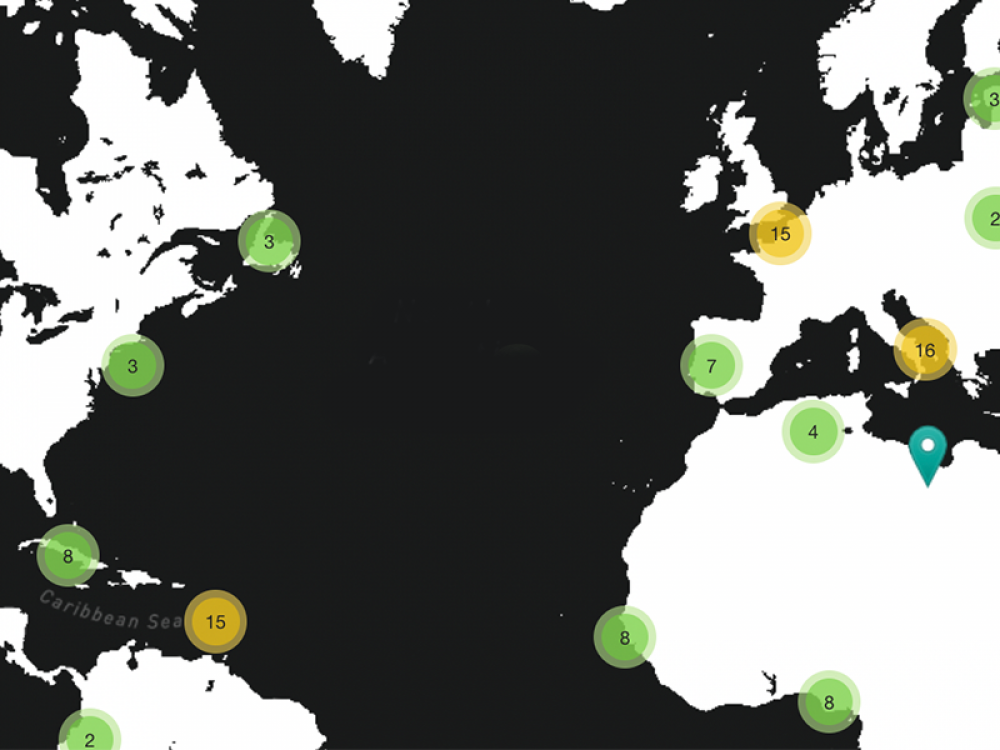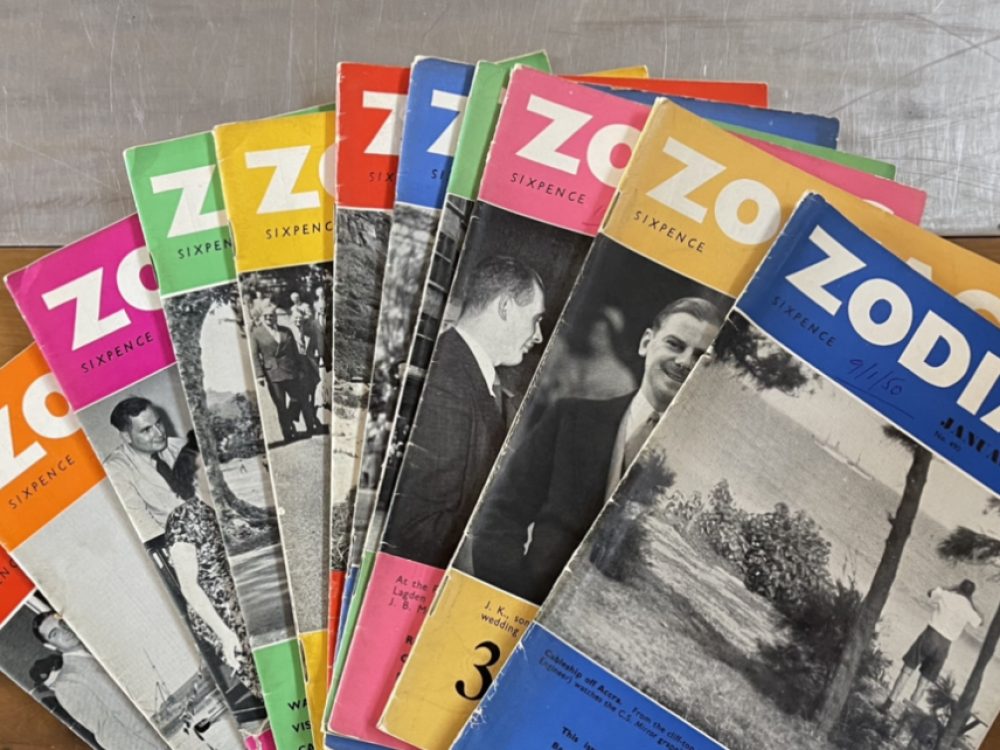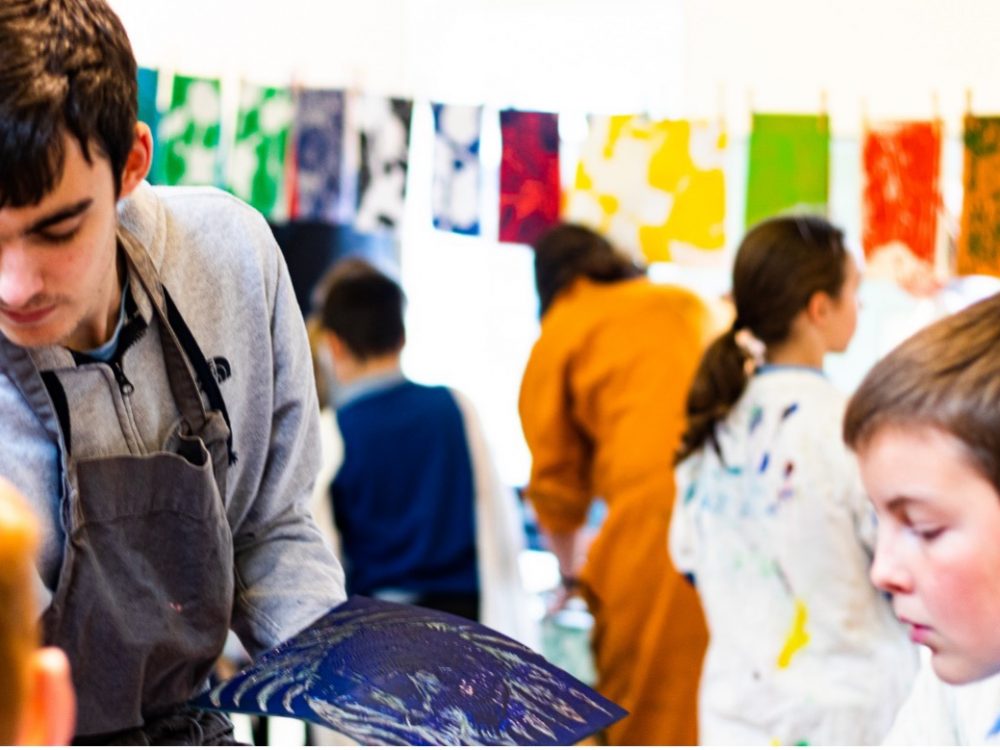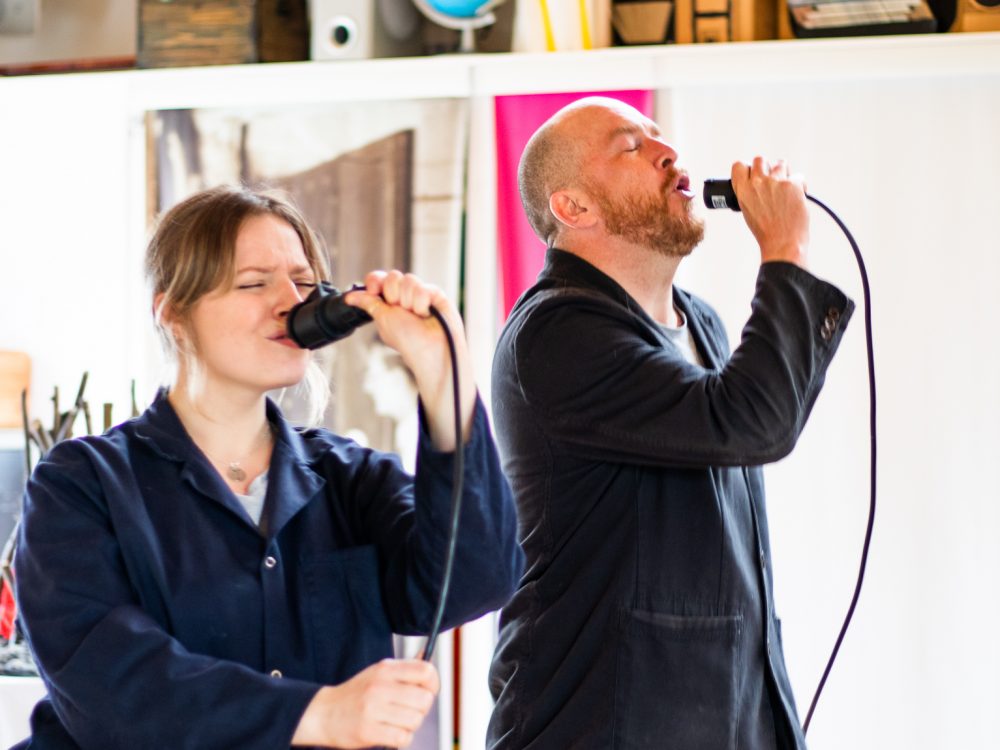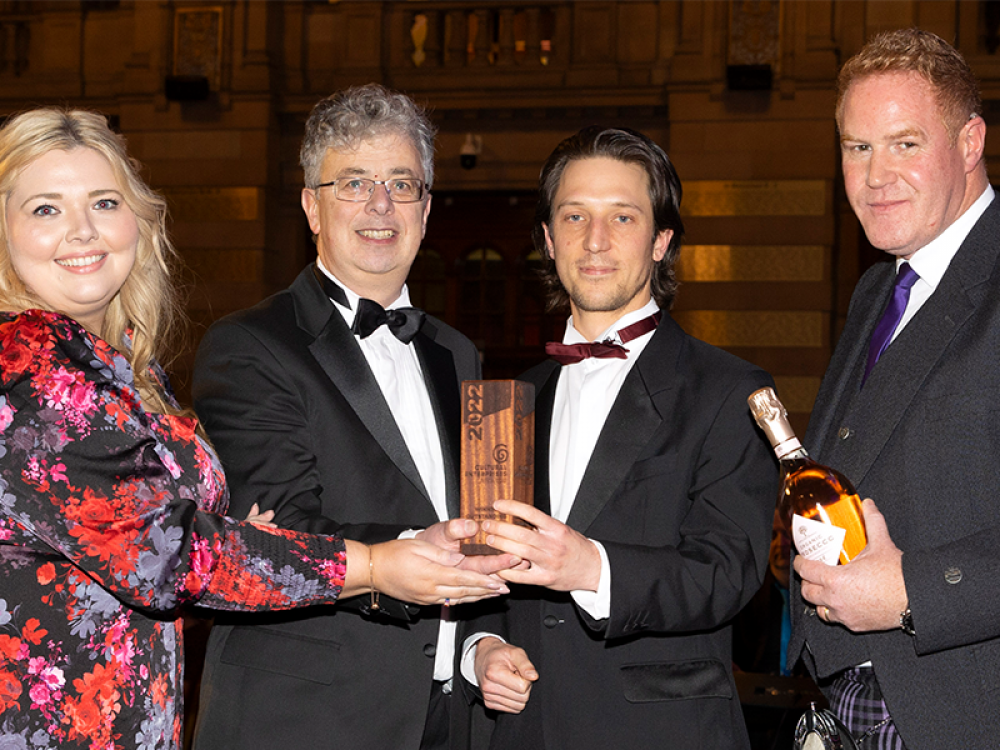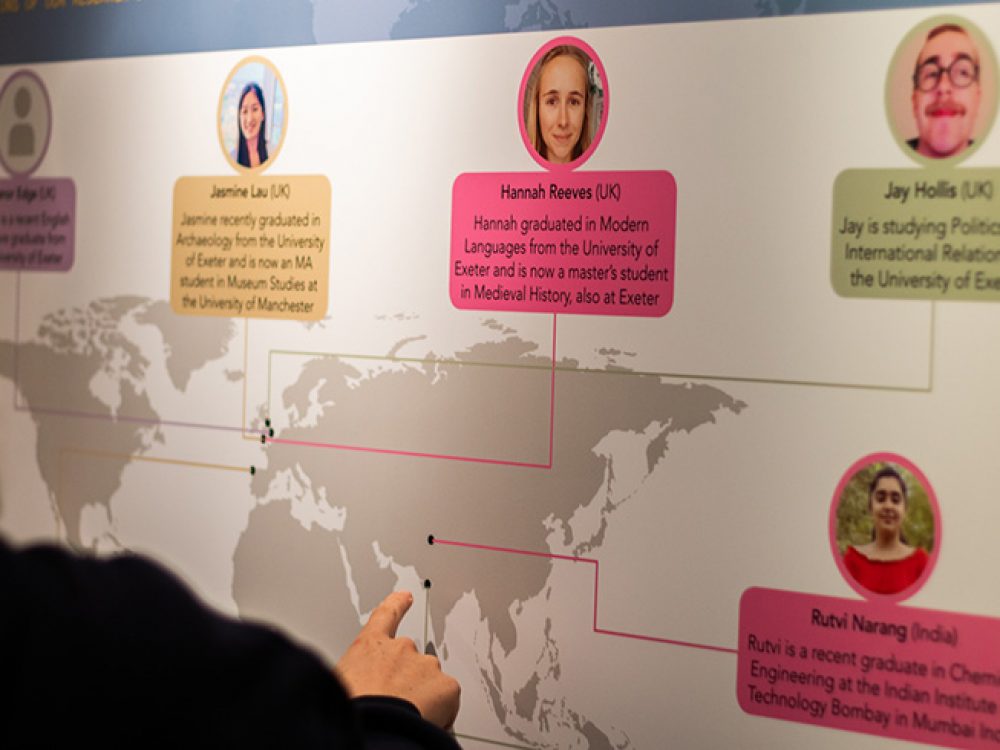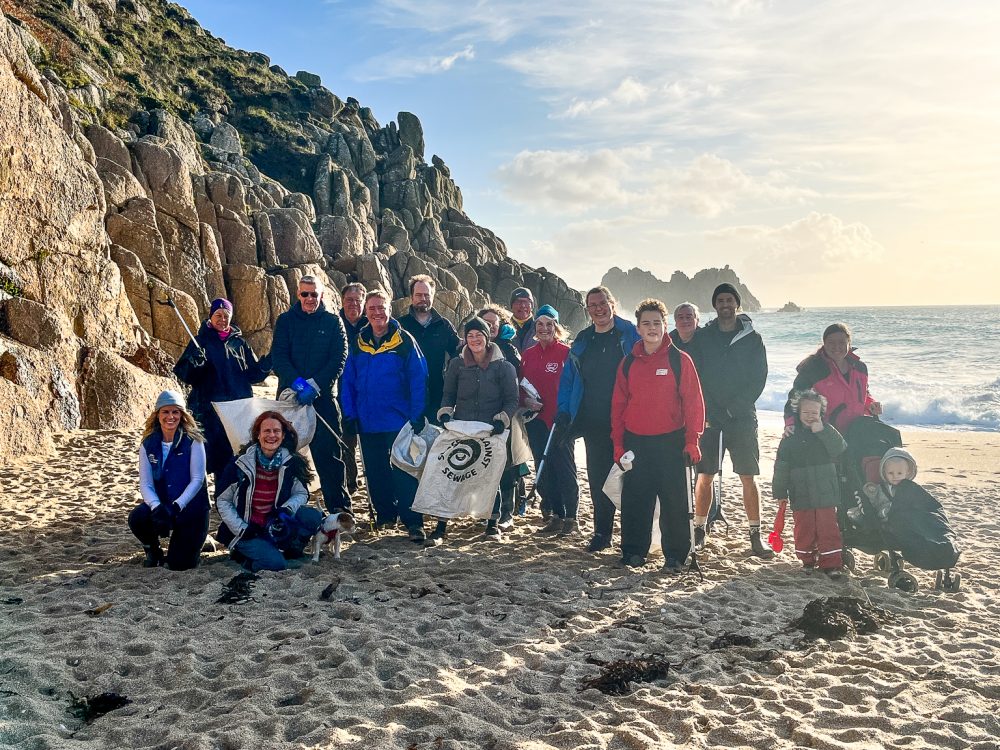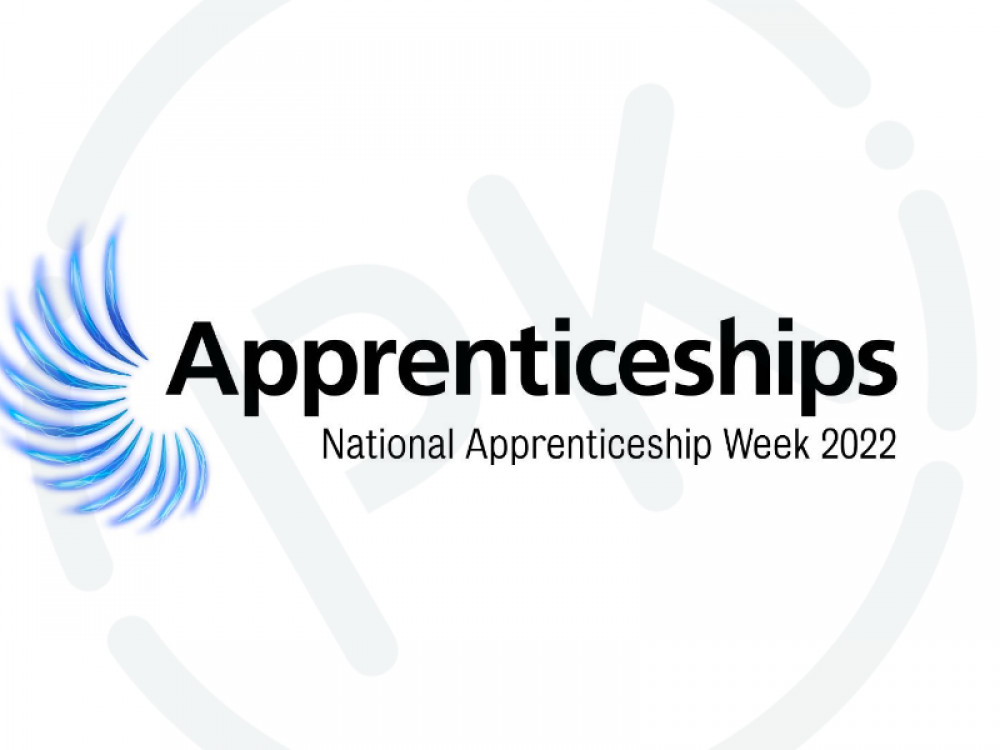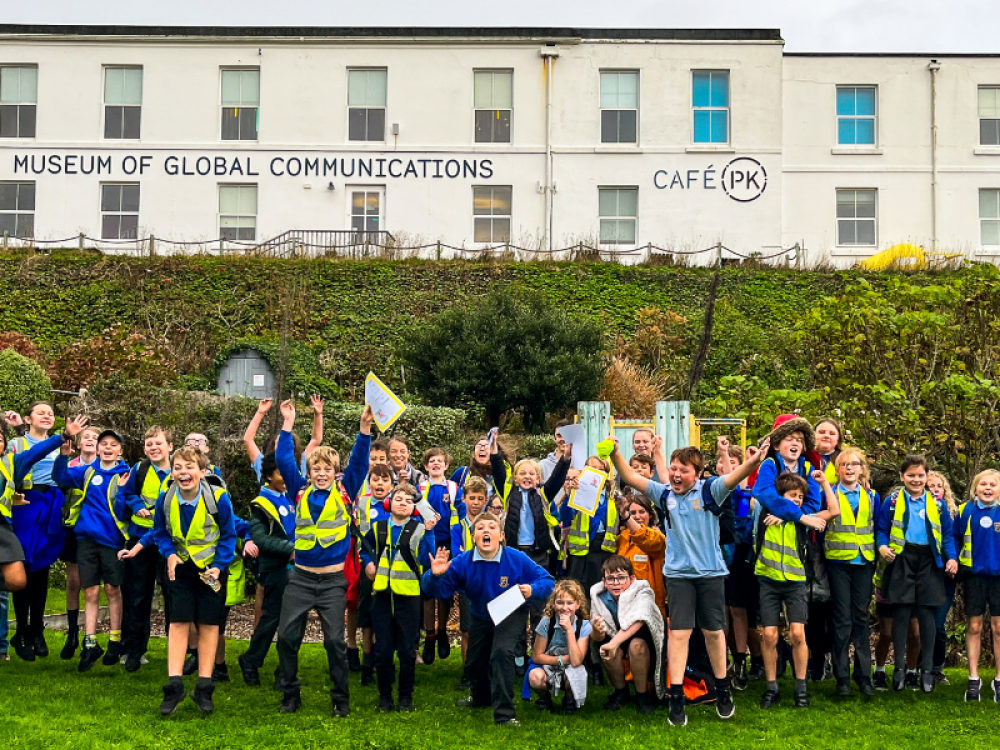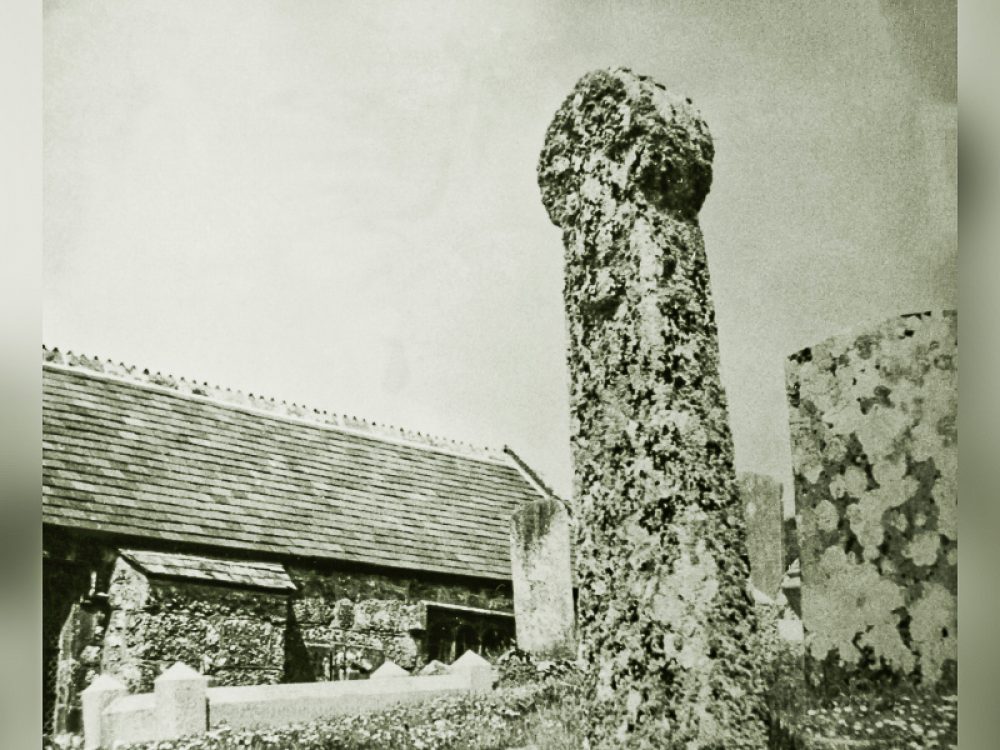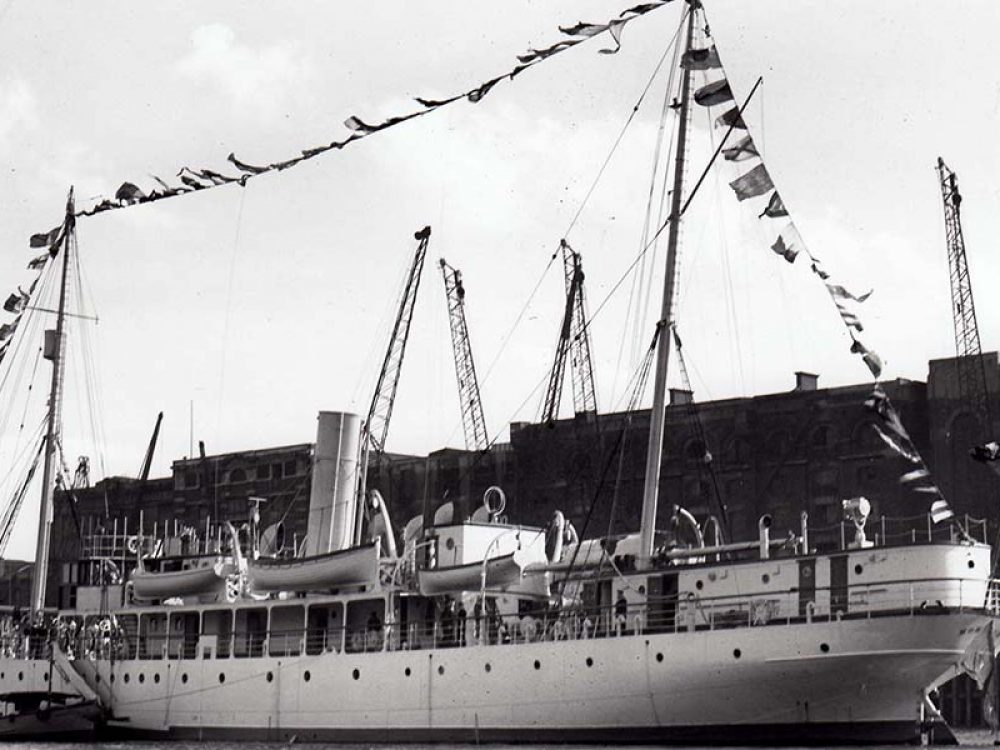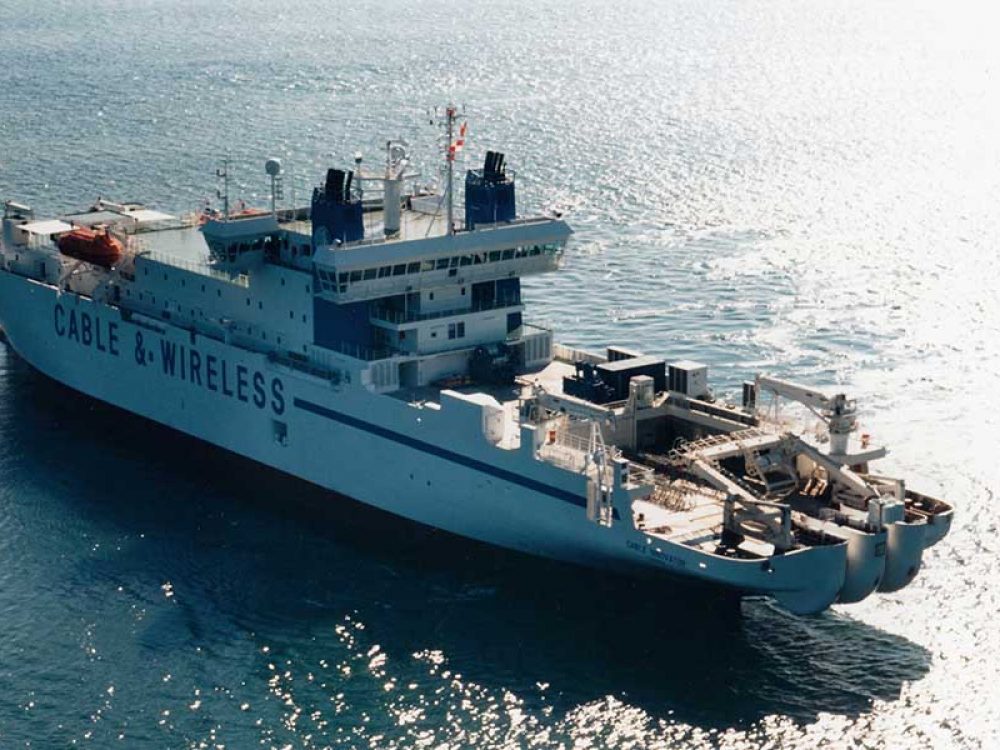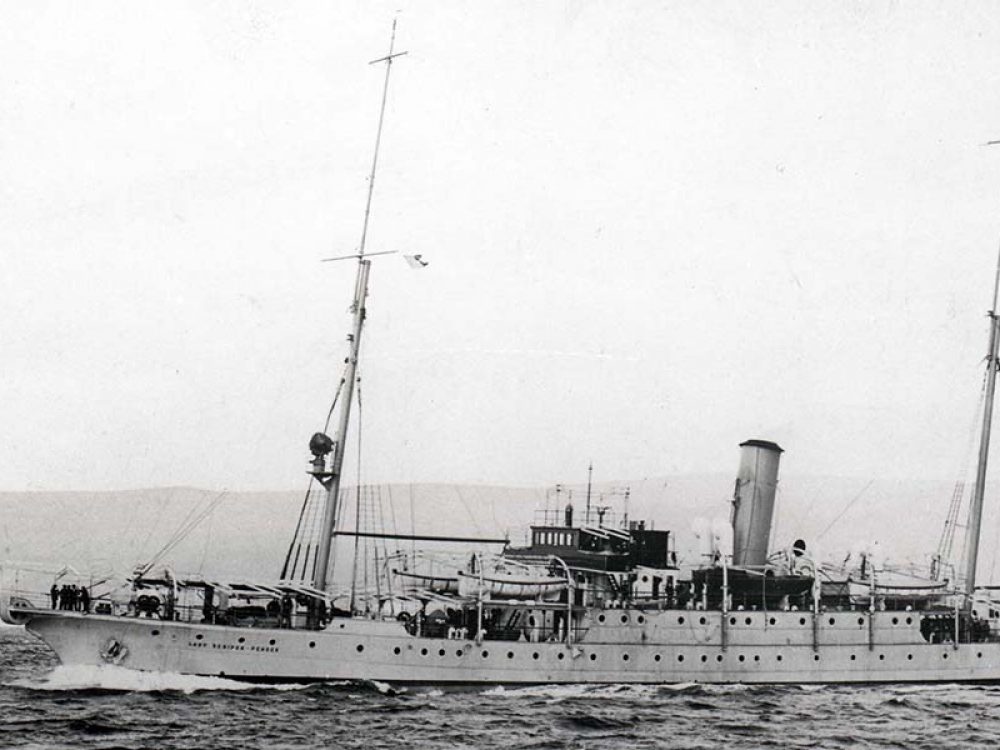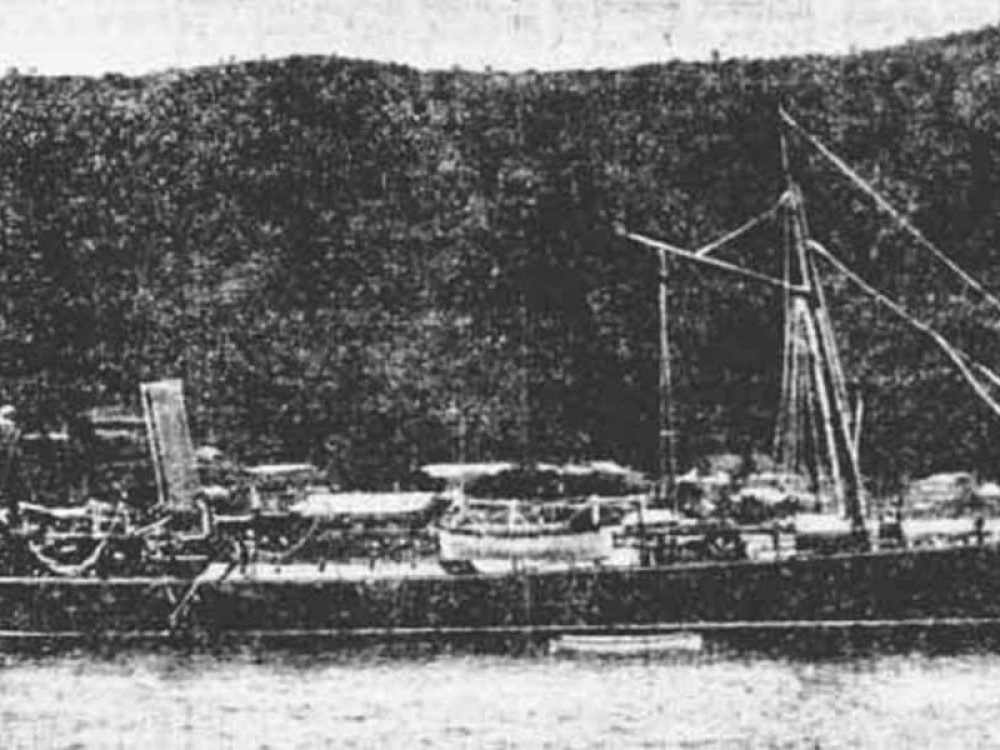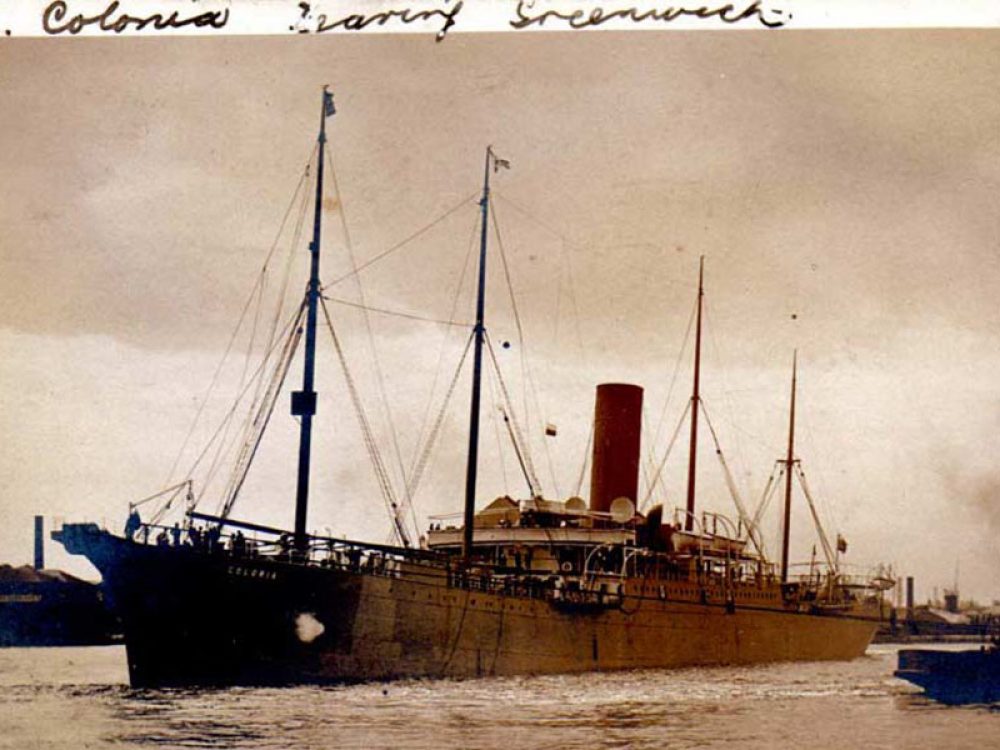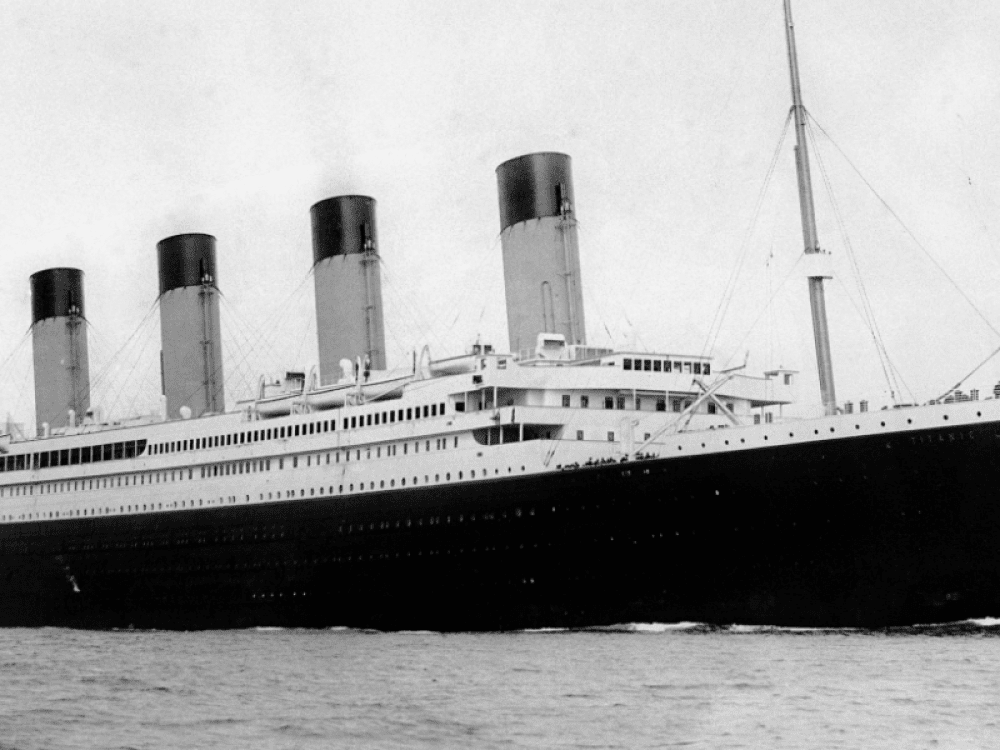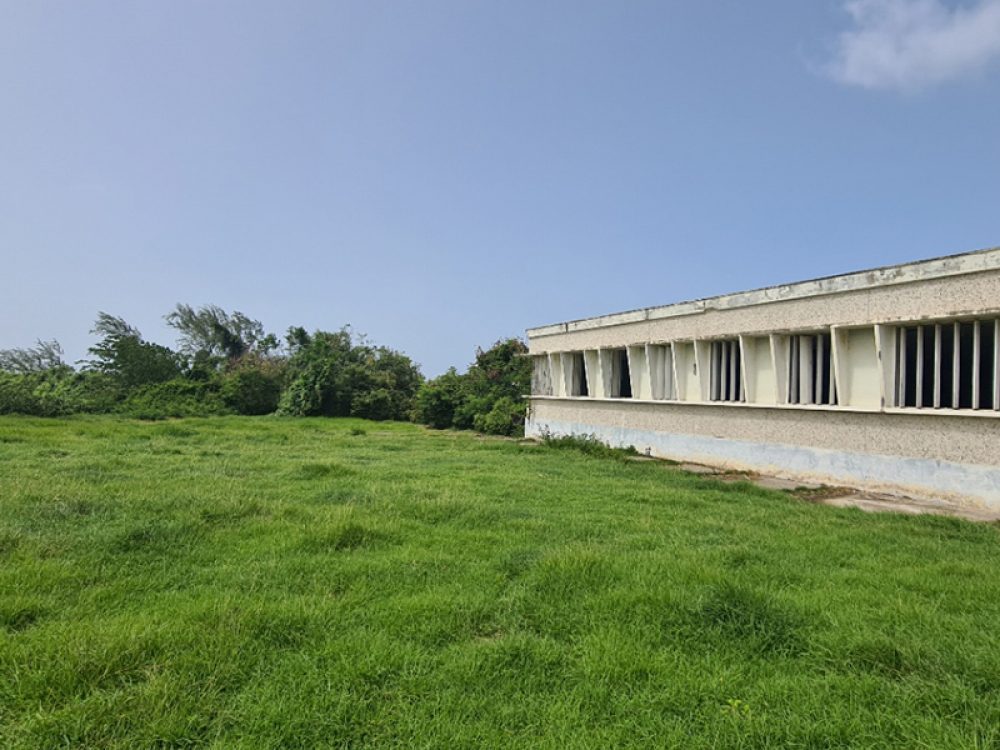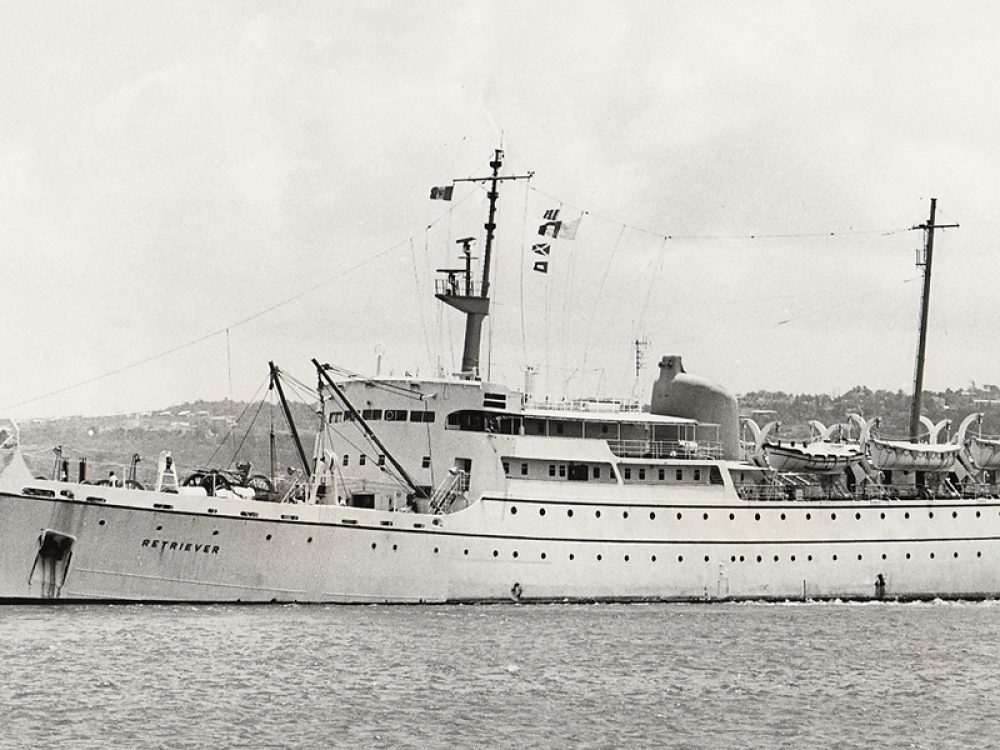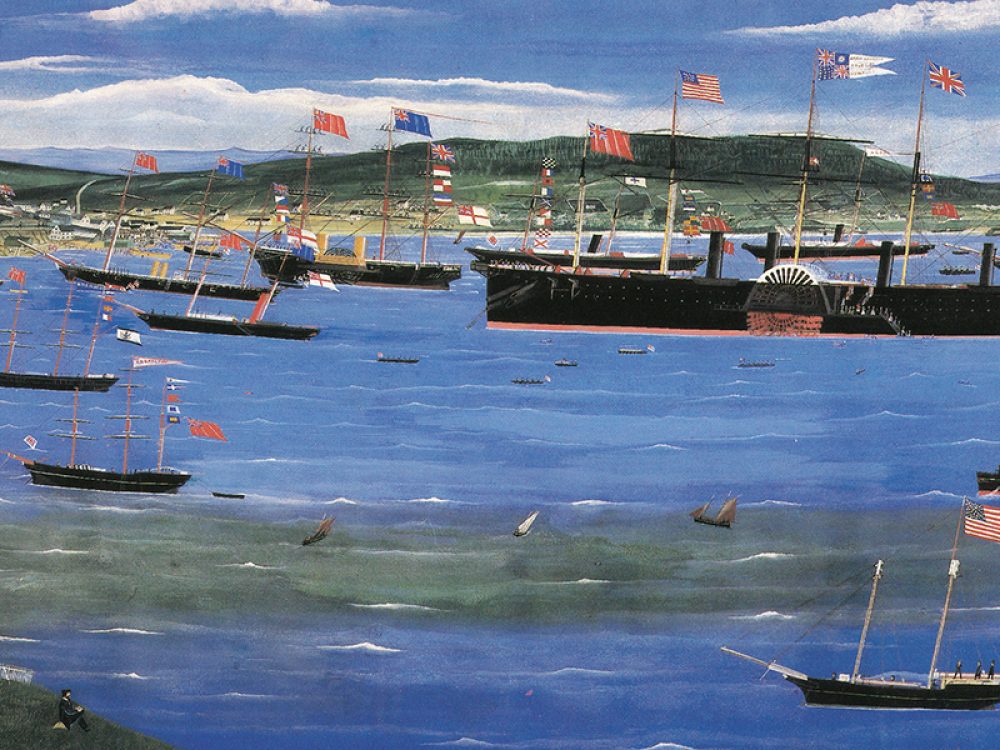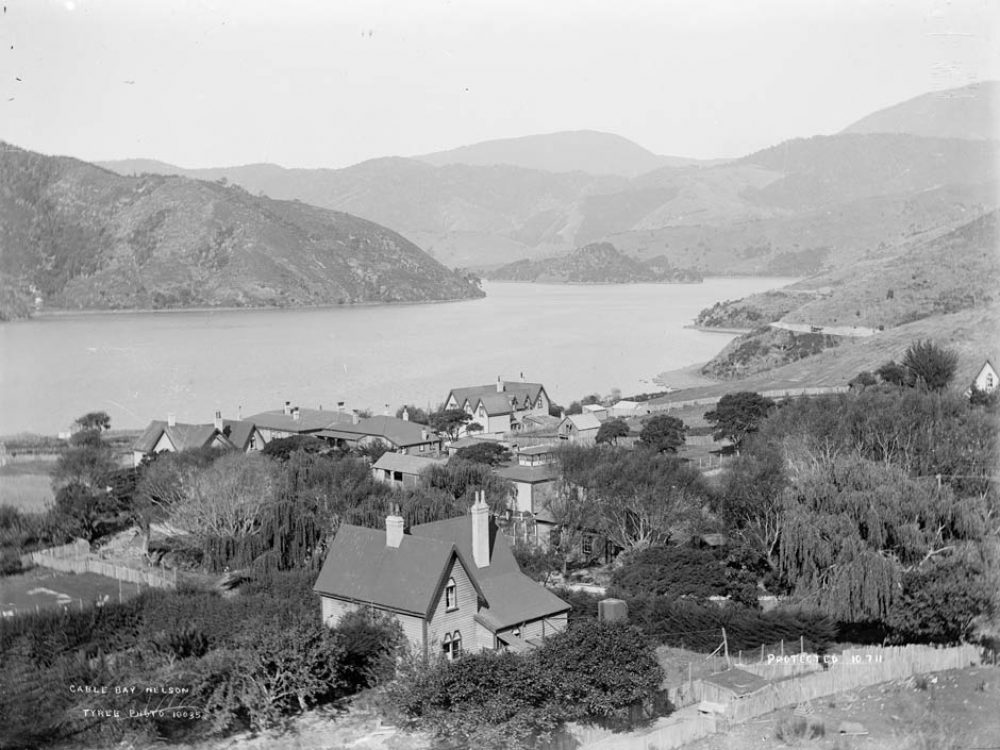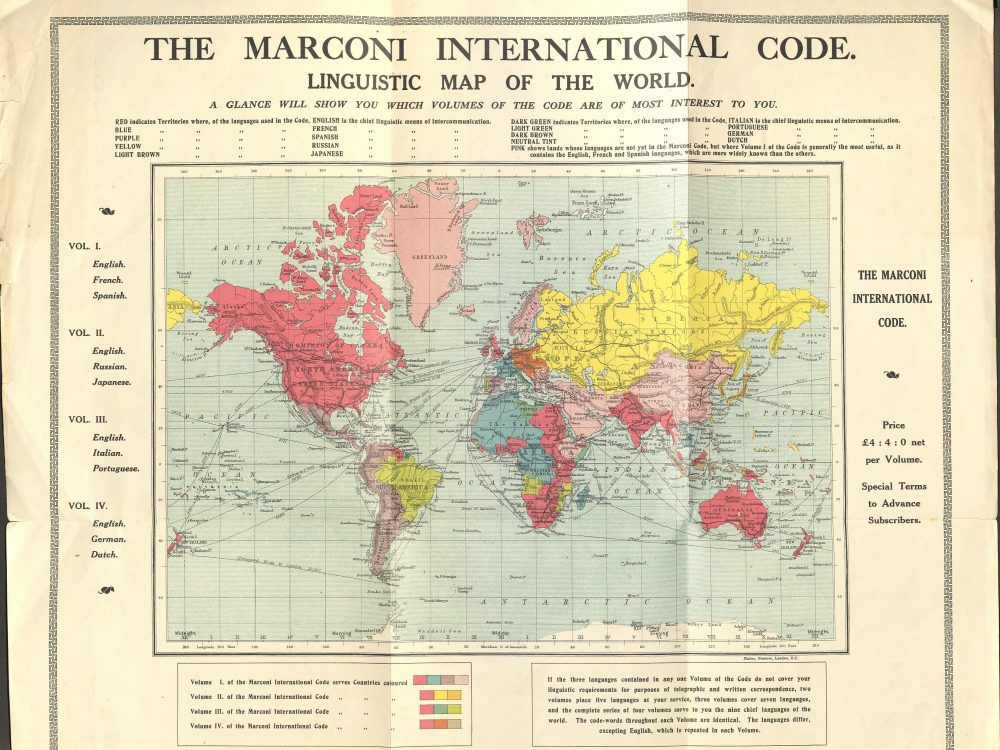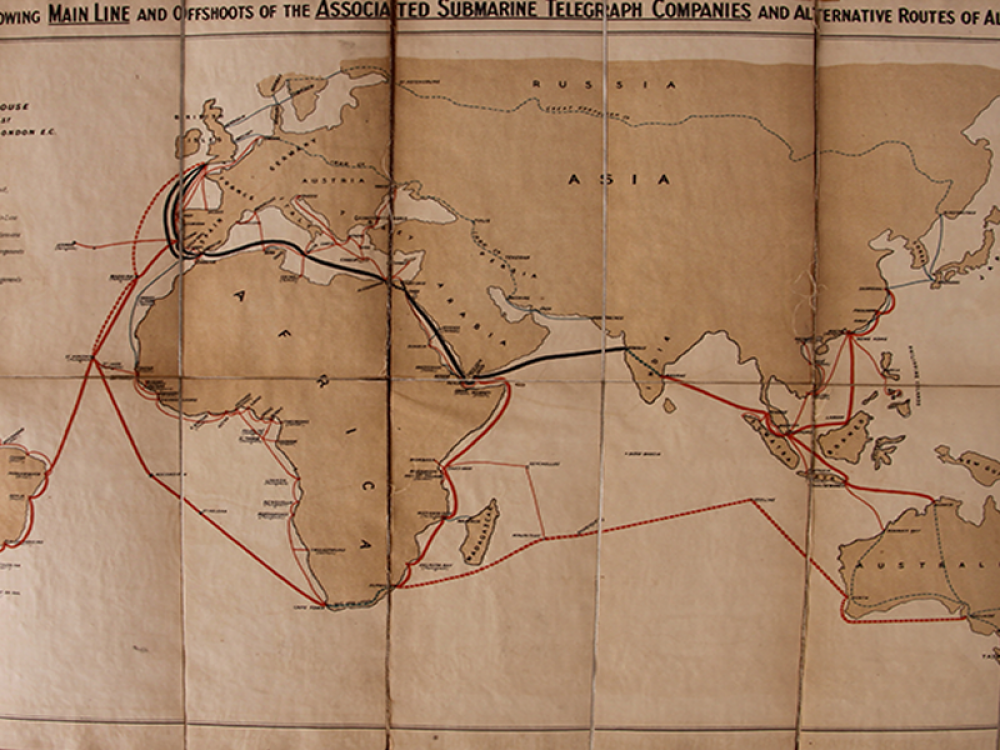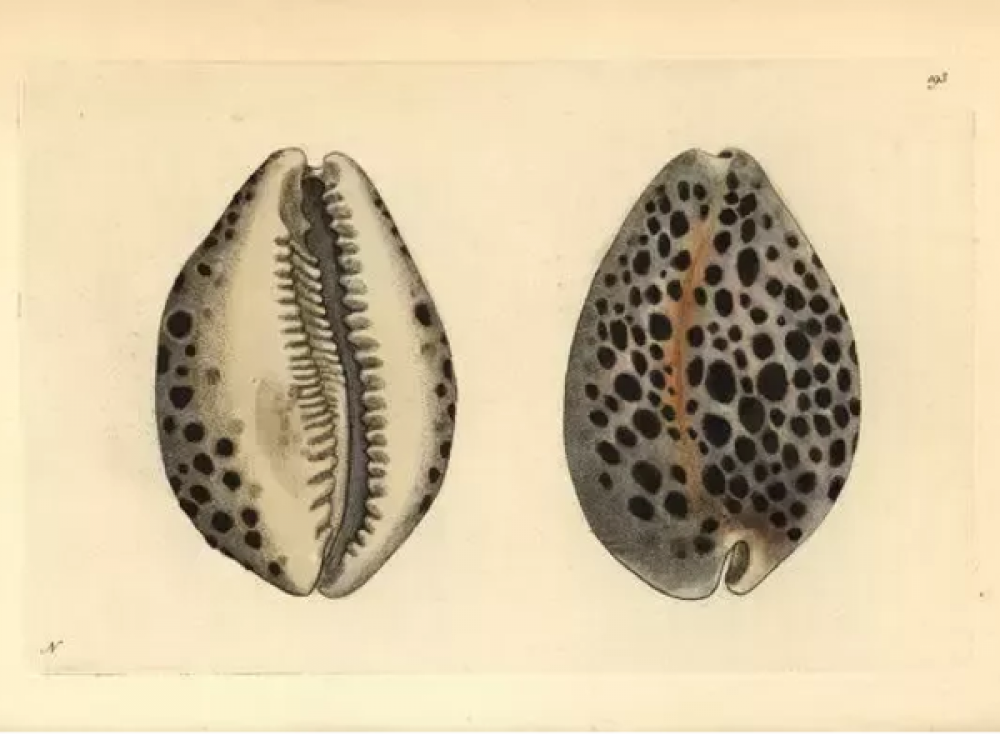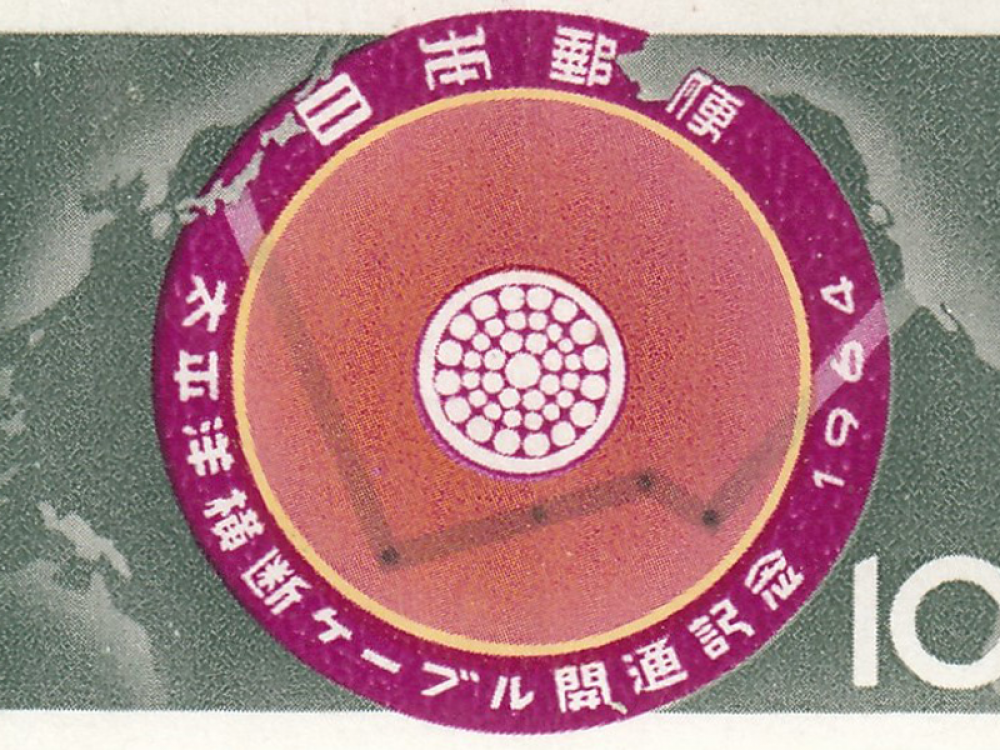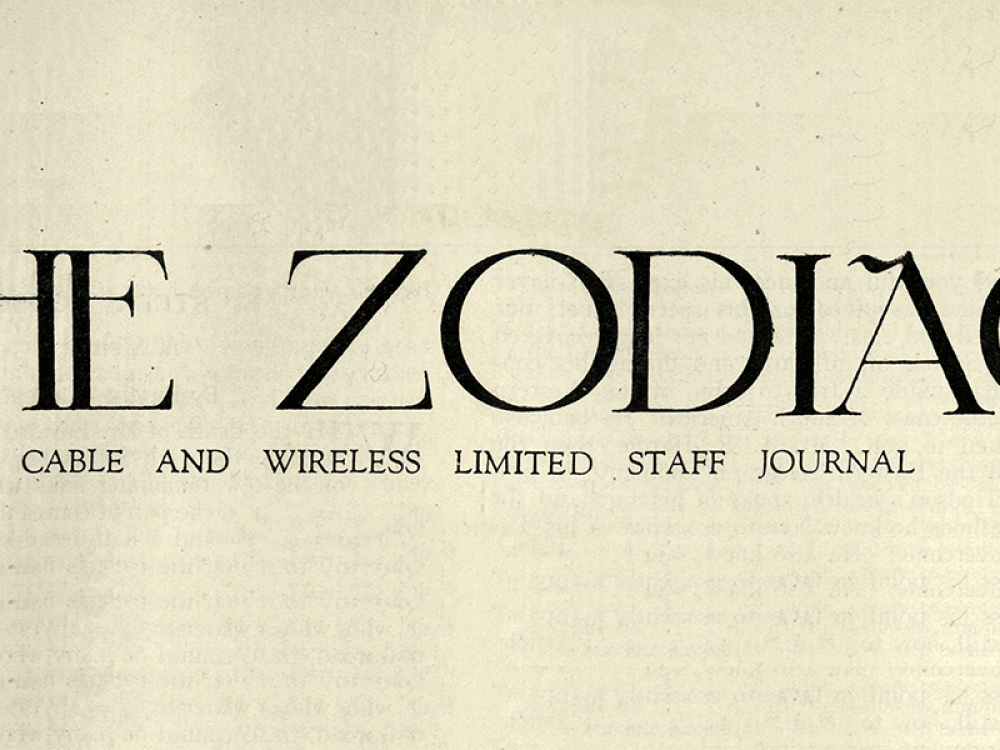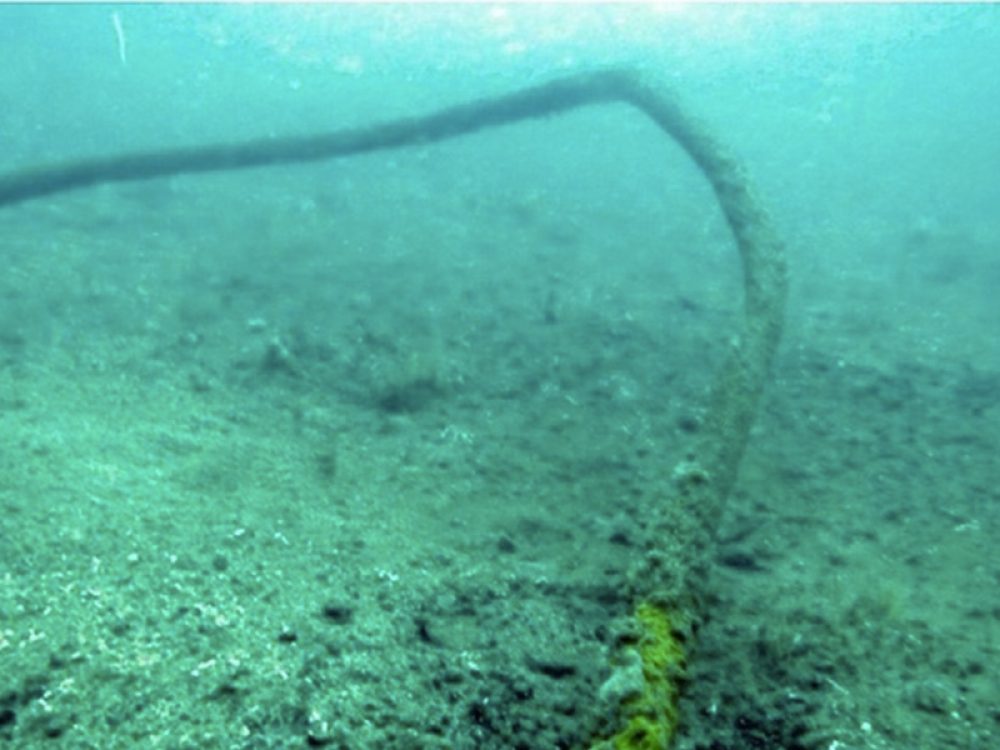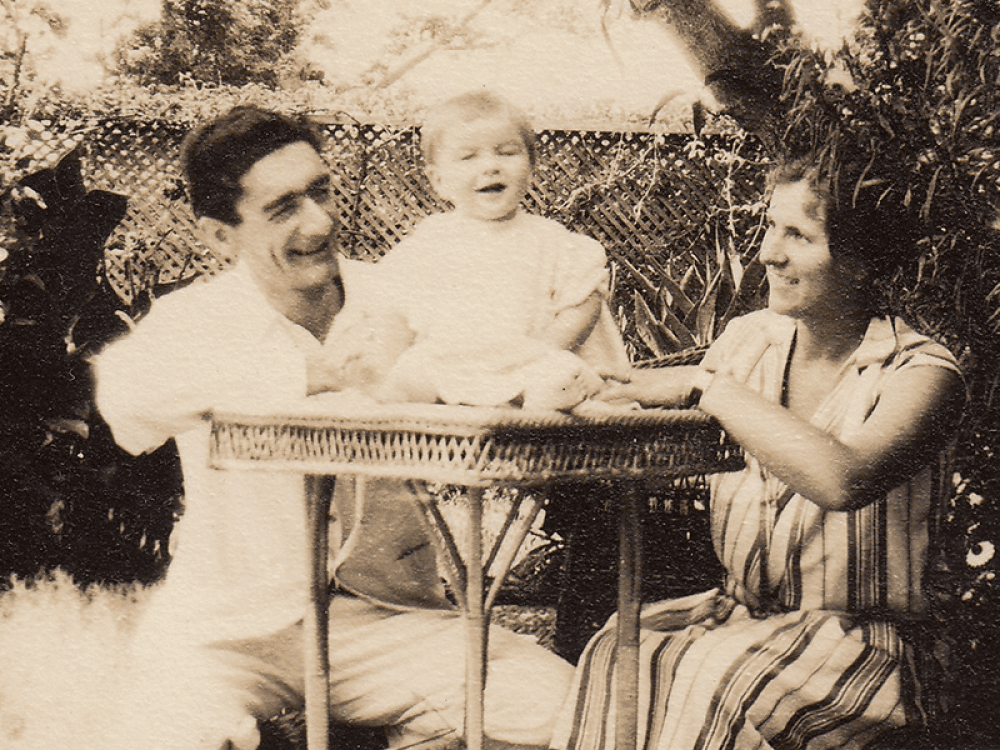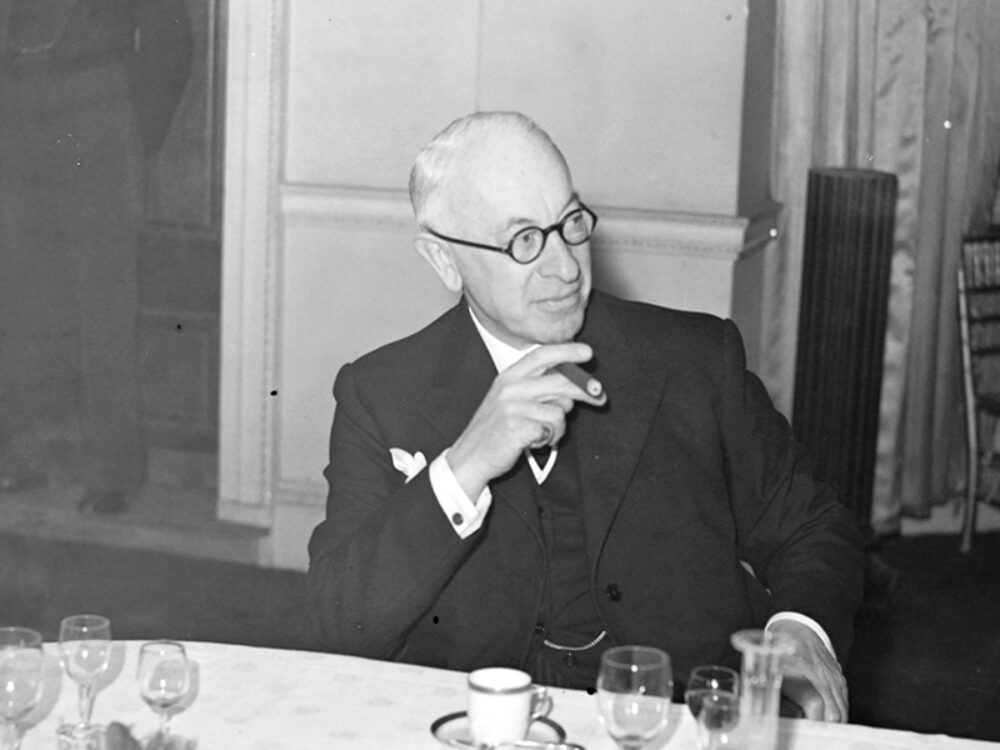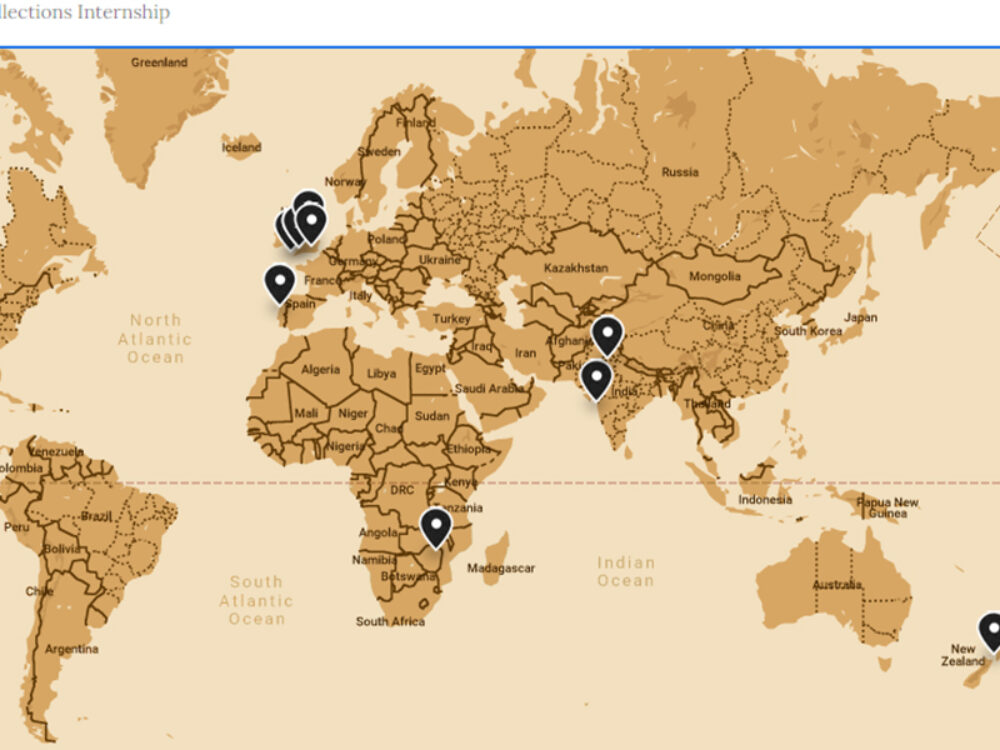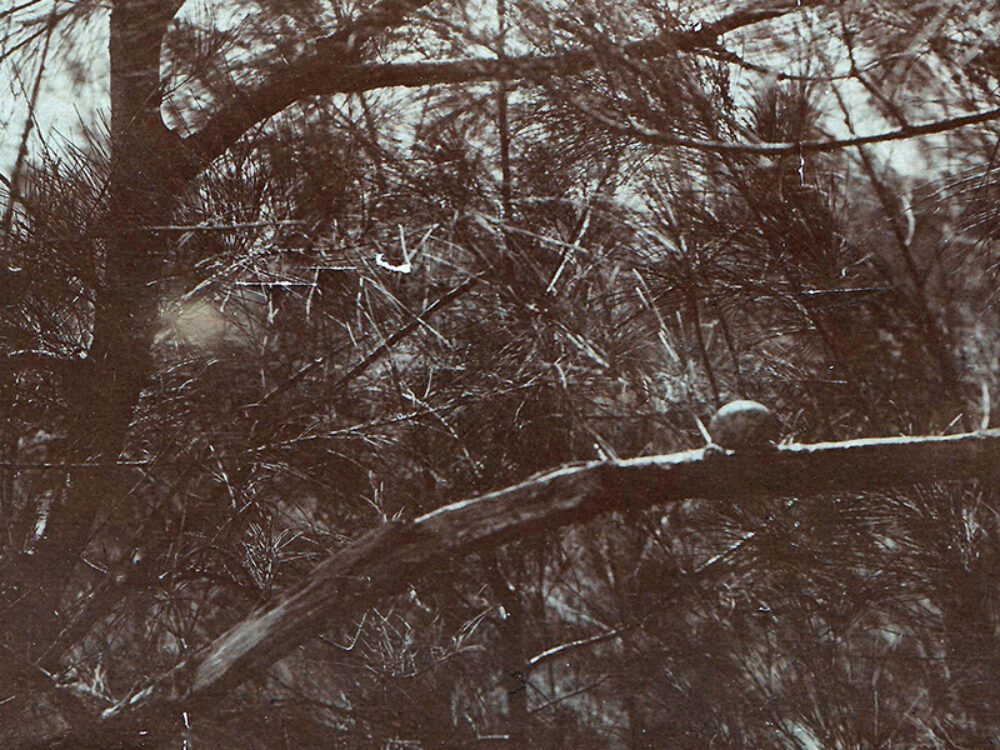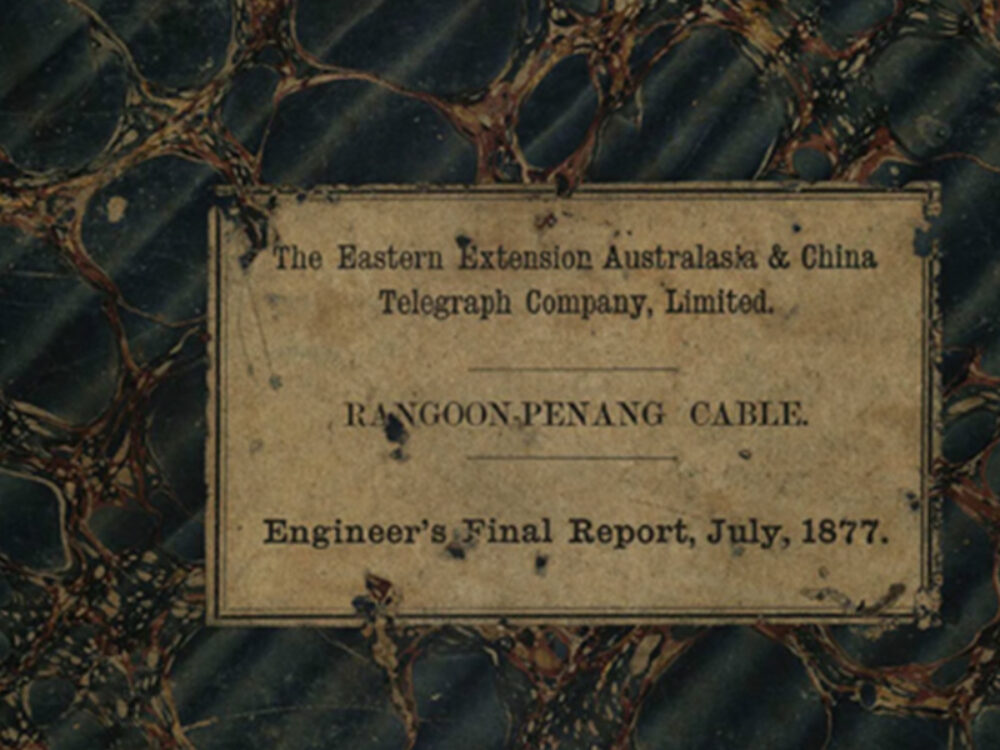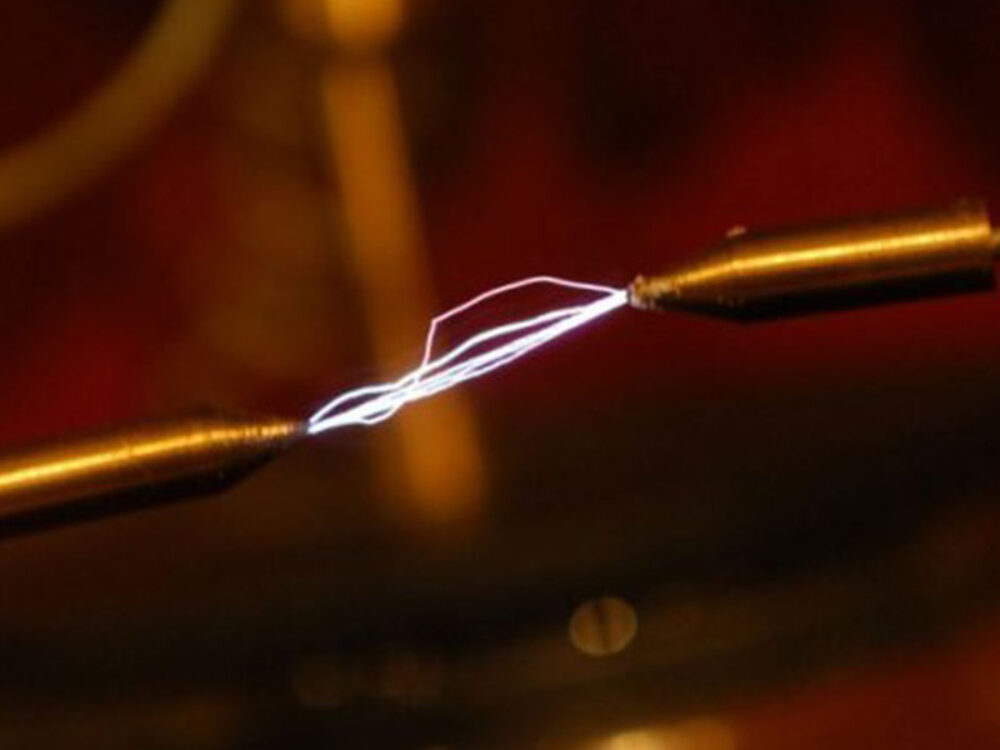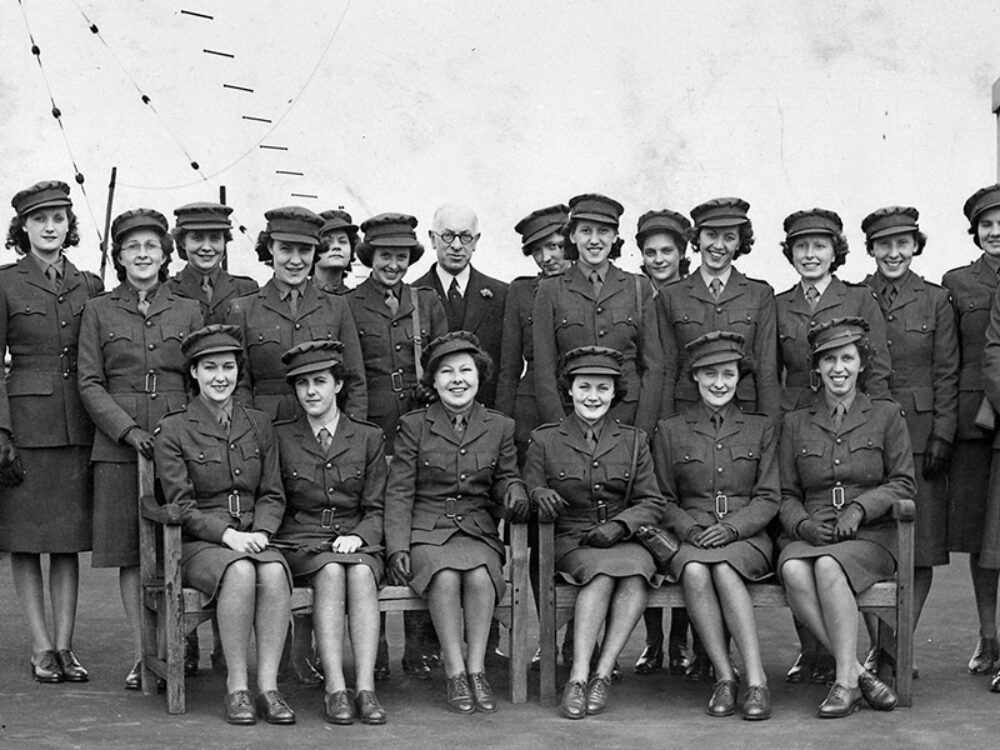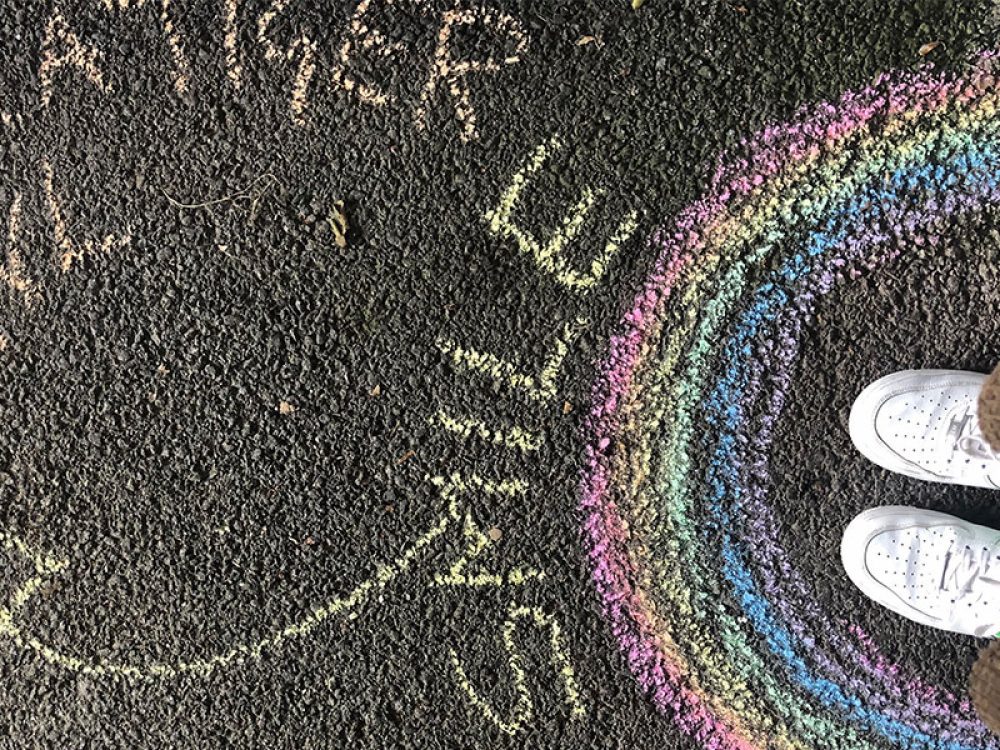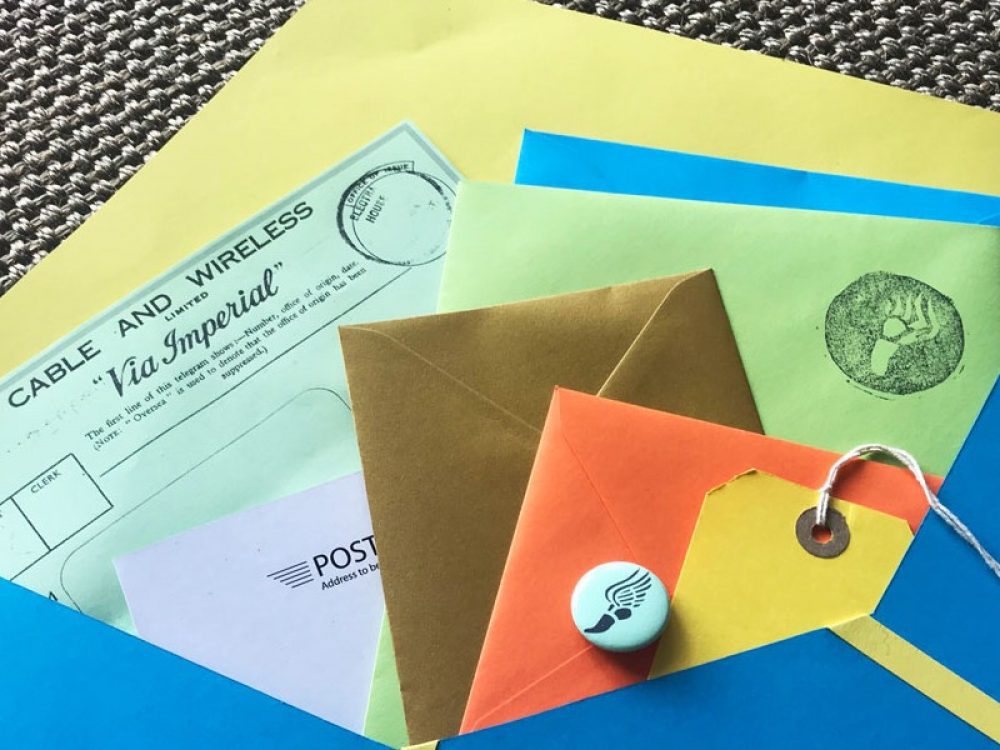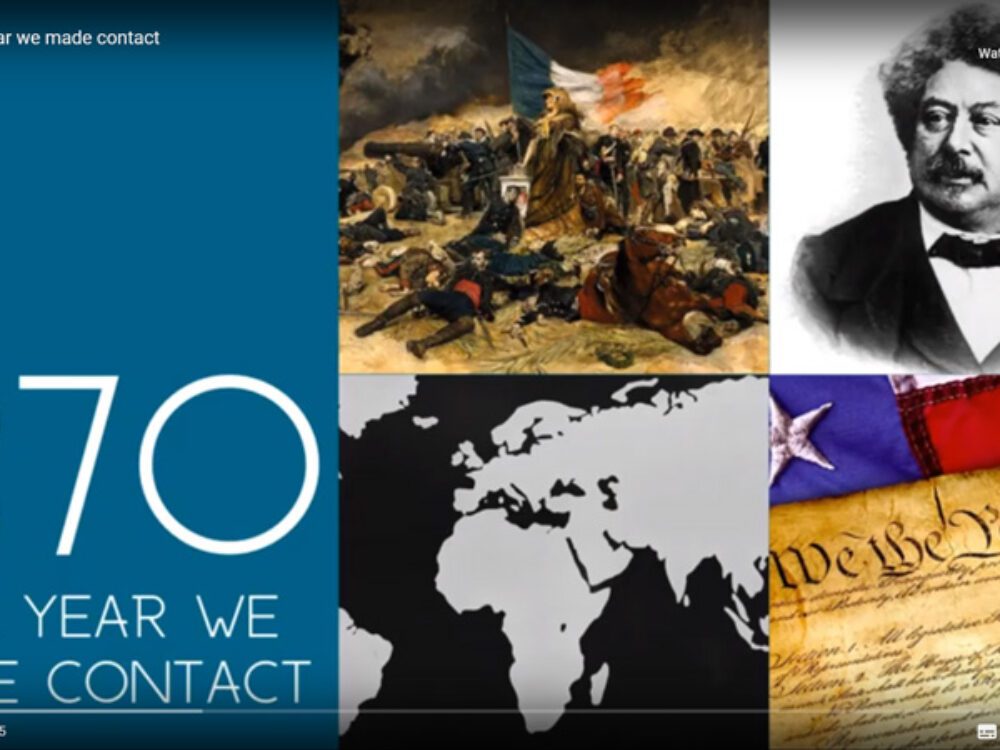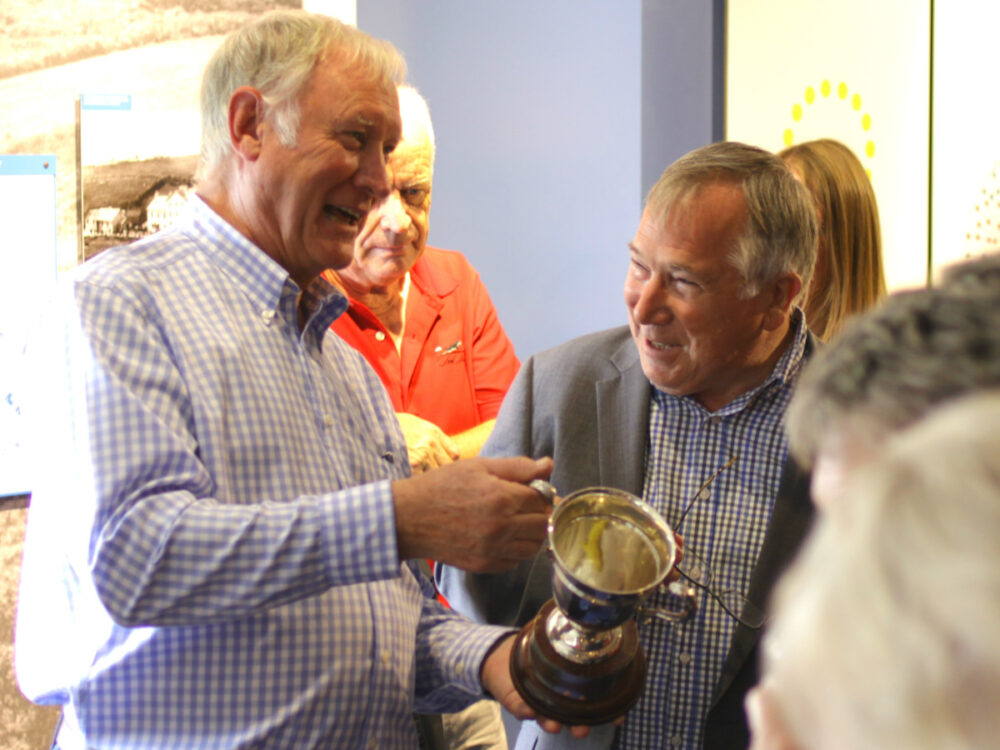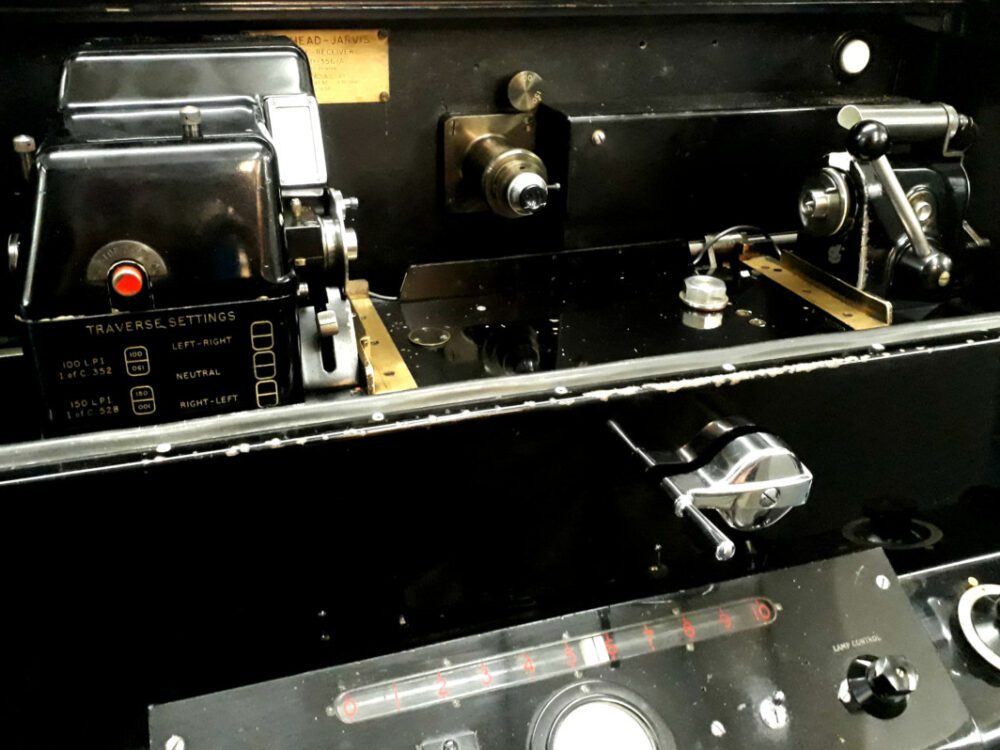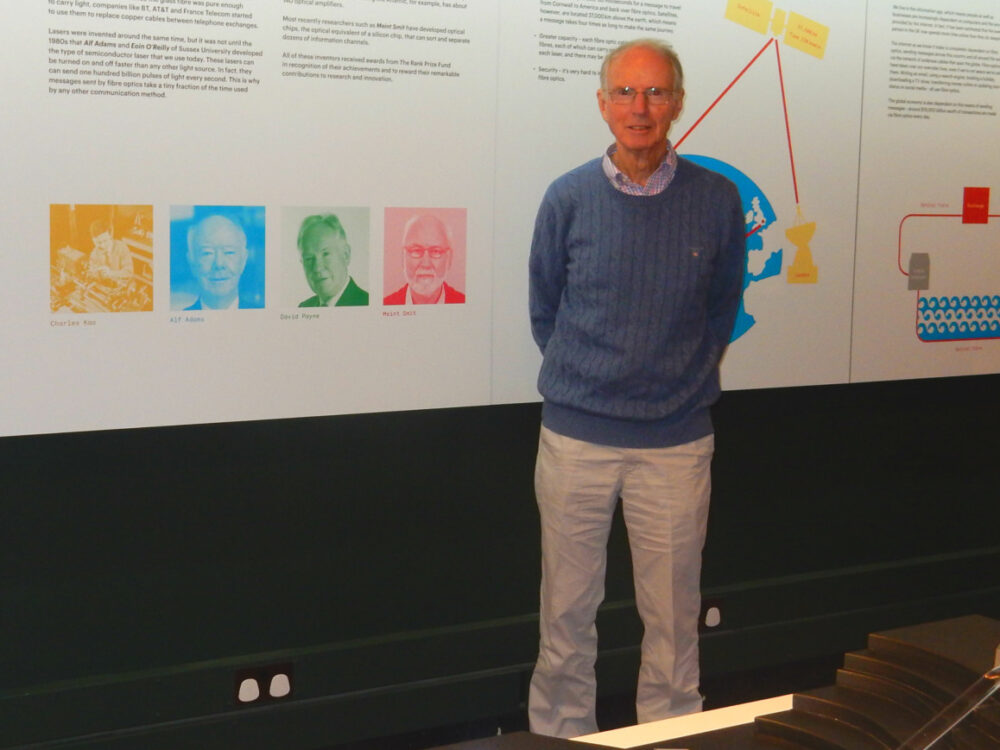Explore our world-class collection and discover the history of global communications and the people who made it happen. From the early days of the electric telegraph and undersea cables, to the invention of wireless, satellite, fibre optics and beyond.
The Exiles Cable Club: Pioneers of Spanish Football
When we think of football in Spain today, names like Barcelona, Real Madrid, and Atlético Madrid come to mind, teams with rich histories and passionate followings. However, the roots of football in Spain trace back to a small group of British expatriates who formed the Exiles Cable Club. This modest but significant club played a
A Small Book for a Momentous Occasion
In the PK Porthcurno archive, there is a small, red booklet. Though beautifully bound in leather and decorated with an intricate gold motif, its size belies the significant achievement that its publication celebrated. Over 150 years ago, Porthcurno saw the arrival of an undersea telegraph cable stretching 5000 miles across the globe to India, heralding
GPO Mobile Telegraph Office (aka Poppy)
PK’s upcoming new arrival The GPO Mobile Telegraph Office (affectionately known as Poppy) is soon to arrive at PK Porthcurno.
The Gemini Cable: A Milestone in the Development of the Internet
The 1997 Gemini cable was the first transatlantic cable to use optical fibre technology and could carry 1.5 gigabits per second of data.
In Loving Memory of Albert Lorens
Many will remember with great fondness Albert Lorens, who sadly passed away in early January at the age of 101. Albert had been a valued volunteer at Porthcurno since the early days of the museum and was always happy maintaining our working machinery.
‘A Message to PK Porthcurno’ – The Cornish Caretakers
PK Porthcurno's second schools tour of our Cornish Caretakers show 'A Message to PK Porthcurno' has just finished and we have a brilliant new blog by Emily Harrison who starred alongside Edward Rowe (Kernow King) in this unique story of global communications...
Family fun in the sun – Connecting with our visitors at PK in August
As the heatwave was upon us all in August we were busy engaging with thousands of people across PK and on the beautiful Porthcurno beach.
World Maritime Day 2022
For World Maritime Day read our collection of success, failures, historic moments and wars involving cableships throughout history.
PK Porthcurno at Cornwall Pride 🏳️🌈
At the end of August, we had a wonderful time at Truro History Pride. We really enjoyed sharing our secret code activity, talking about the history of global communications, and meeting lots of friendly people.
Our ‘Planet PK Summer of Fun’ is here!
This summer we invite everyone to come and take part in our unique and playful activities at PK Porthcurno designed by our Learning Facilitators Alice Howard and Paul Tyreman.
PK Online Collection (PKOC) Themes
It can be difficult to know where to start. Our quick guide for the PK Online Collection helps guide you to explore over 34,000 items.
PK Porthcurno Shortlisted for National Family Friendly Award
Charity Kids in Museums has run a prestigious annual award for 16 years, recognising the most family-friendly heritage sites in the UK.
PK Bubbles and Morse code go back to the future at Golowan
Last Sunday we had a wonderful time delivering Pop-up activities at Golowan. We met lots of lovely people who enjoyed our offerings.
The Cornish Caretakers
Ed Rowe, the Kernow King, shares his experiences of bringing our Cornish Caretakers show to schools and classrooms around Cornwall.
Oral Histories on PKOC
The archive at PK holds histories collected from those connected with C&W available to listen to online through the PK Online Collection.
Telegraphy in West-Africa
Annabelle Garfield, Masters student at Exeter Uni explores a photo album from our PK archives about African Telegraphy throughout the 1900's
Mindfulness in Porthcurno
For Mental Health Awareness Week we are happy to share this guest blog and beautiful mindfulness video by filmmaker Alban Roinard.
PKOC World Map – Explore the Global History of Communications
The collections held at the Museum of Global Communications contain archive material and objects from around the world, reflecting the global nature of the industry. The PK Online Collection (PKOC) provides a World Map that allows users to explore the items we have connected with a particular place.
The World of The Zodiac: Observing the 20th Century’s Global History
Exeter Students Lottie & Haseeb observe the global history that is presented in the Zodiac Magazine, the print from Cable & Wireless LTD.
Exeter Students Takeover PK Porthcurno
Michael shares his research, planning and taking the lead of a Takeover Day at PK Porthcurno for his Public History Project at Exeter university.
A Message to PK Porthcurno
PK Porthcurno are delighted to bring a new Cornish Caretakers show and workshop called ‘A Message to PK Porthcurno’ to 40 schools across Cornwall between March to May 2022.
PK Porthcurno win double at National Cultural Enterprises Awards
PK Porthcurno have won the prestigious Green Award as well as the Outstanding Contribution Award at the Cultural Enterprises Awards 2022.
The ‘award winning’ PK150 Connected Collections Exhibition
This new exhibition showcases the work created by our remote international students based into the collections at PK Porthcurno.
Porthcurno Awarded ‘Plastic Free Communities’ Status
Porthcurno Awarded ‘Plastic Free Communities’ Status as it Takes Action on Single-Use Plastic Porthcurno is leading the way nationally as part of a network of communities across the UK who are taking on the challenge to tackle throw away plastic at source. The village has been awarded ‘Plastic Free Community’ status by marine conservation charity, Surfers
National Apprenticeship Week 2022
PK Porthcurno's Digital Marketing Apprentice, Josh shares with us a brief outline of his year as an apprentice at PK Porthcurno.
“I Remember this Christmas…”
Christmas is a time of memories and for many people throughout the decades, the celebrations have continued throughout some especially unique and life-threatening circumstances for some Cable & Wireless staff.
Kids in Museums Takeover Day
For our Kids In Museums Takeover Day students from Exeter University, took over our engagement team and delivered a climate themed workshop for King Charles Primary School in Falmouth.
Eerie Stories and Haunting Halloween Tales
Tales as old as time, ghosts stories have been around for centuries, we share with some of our own from Porthcurno to out at sea.
Monarch Under Fire
The history of the Second World War is one rich in stories and those of cableships are no less courageous and hazardous than those of warships. Learn about a 'friendly' fire incident with the cableship Monarch.
What is a cableship?
Discover the history of cableships from the early ships repurposed to lay the first telegraph cables across the Atlantic, to the development of purpose built cableships that lay and repair fibre optic cables today.
The Lady and the Wolfpack
Our cableship blog series continues with this account from the Second World War. In 1943, cable repair ship, Lady Denison-Pender, is escorted on hazardous duties by an armed convoy, in what is to be a very close call with a U-boat wolf-pack near the Spanish Sahara.
The End of the Grappler
Duncan Mackenzie explores the fateful story of the cableship Grappler which got caught in the pyroclastic flow of the Mont Pelée volcano eruption of 1902. Part of our cableship blog series.
Colonia vs the U.S. Navy
Duncan Mackenzie continues his cableship blog series with a story about the British cableship Colonia being fired upon by the US Navy in 1920!
Recovering the Titanic’s Dead: the Mackay-Bennett
Our Digital Collections Officer, Duncan Mackenzie, looks at the cable ship the Mackay-Bennett and it's role in recovering the deceased from the Titanic.
Congor Bay Satellite Earth Station Revisted
Explore the site of the Satellite Earth Station in Congor Bay, Barbados, with PK Porthcurno volunteer Robert de Corday Long, who worked for Cable & Wireless when the station was originally opened in 1972.
Five (-ish) Cableships called Retriever
Our Digital Collections Officer, Duncan Mackenzie, explores the history of five cableships, each named Retriever.
The Great Eastern
Duncan Mackenzie, our Digital Collections Officer, explores the history of Isambard Brunel’s SS Great Eastern. The SS Great Eastern was a formidable but flawed iron ship that laid the first successful transatlantic cable in 1866.
Rotokura/Cable Bay, Wakapuaka – New Zealand’s first international telegraph cable
Vida Long is a graduate from Wellington University, New Zealand researches the site of New Zealand's first international telegraph cable landing,
The Languages of Telegraphy
Citizen curator Hannah Reeves, researched the Marconi Map, created in 1917. The map is colour coded to show the language most used for communications in each country.
Porthcurno to Port Darwin: The Establishment of the Australian Subsea Telegraph Cable
Isabelle Jones is a Young Curator and volunteer at PK Porthcurno. This article looks at the establishment of the first Australian subsea telegraph cable that connected Britain with Australia.
Seashells and Empires: allowing memories to guide my curator research
Citizen Curator Jay Hollis, a student from the University of Exeter is finding ways to be creative in telling stories through the museum's archives.
Stamp into PK: Stamps from the G7 countries
The telecommunication stamps in the PK collection teach us about the history of communication. All the stamps in this blog were issued by the countries attending the 2021 G7 summit in Cornwall.
Remote Volunteering on the Zodiac Project at PK Porthcurno
Volunteer - Natalie Gunner, an English student at the University of Exeter, describes her experience of volunteering on the Zodiac project. What she has learned throughout the experience and the importance of social history.
Darwin subsea cables
Young Curator Raquel Coning, based in Australia, and inspired by information discovered in The Zodiac magazine, researches the heritage listed subsea cables that connected Darwin, Australia to the world 150 years ago.
Bobby’s Letters
Last year PK Porthcurno was gifted a collection of letters, written between the years 1915 to 1925, from the nephew of Edgar Lawrence Smith - who began his career working for the Western Telegraph Company.
Sir Edward Wilshaw Family Films
In 2020, PK Porthcurno was gifted a collection of digitised films, the majority of which have been filmed by Sir Edward Wilshaw, Chairman for Cable & Wireless from 1936 to 1947.
PK’S 2021 CITIZEN CURATORS
Introducing PK's 2021 Citizen Curators and International Research Interns and the projects that they will be undertaking using our archives and collection.
OUR EGGS-CITING MYSTERY
Sophie Meyer, Collections Cataloguer at PK Porthcurno unearths a mystery during some recent research in the photography archive.
SES Digitisation project
Learn about the SES sponsored digitisation of 448 engineers reports from our archive that is being undertaken by the collections team.
British Science Week 2021
It's British Science Week and we are looking at the advent of the electric telegraph - the precursor to today's internet!
The Telcom Girls
To celebrate the International Day of Women in Science we highlight a groundbreaking unit of Cable & Wireless that launched with the first female employees to be stationed overseas.
Play in a socially distanced world
PK Porthcurno was selected to take part in a Kids in Museums mentoring project that explored ways of bringing play into the museum, in a socially distanced world.
Storylines and Sennen School Project
Inspired by the uniformed Messenger Boys, who delivered telegrams by bicycle or foot, children from Sennen School will become ‘Messengers,’ sharing their own stories and collecting stories from their families and friends.
The Medical Side of Porthcurno
Citizen Curator Explores Medicine at the College Citizen Curator Susan Kersley brings her knowledge of medical matters to an exploration of the medical issues encountered in Porthcurno during the years of the engineering college in a video. It can be found on our YouTube channel. A unique exploration into an aspect of Porthcurno’s history, the
The Development of the Telephone Box
New Videos on the Museum’s YouTube Channel Communications are all around us and have revolutionised our lives. In our mini-series on classic public communication on the street, we look at the development of the iconic British telephone box. And in a supplemental video, we take a little look at the curious meeting between the
Latest PK Videos on YouTube
Pillar Boxes, Telephone Boxes, and a Little Talk & Tea It has been an active month on the museum’s YouTube channel, with seven videos being uploaded in only three weeks. These videos include ‘Talk & Tea’, created for an exhibition in our tunnels. Between January to March 2019 pupils from St Buryan Academy Primary School
Citizen Curator Video: Once Upon a Time
Citizen Curator Lucy Coyne’s Video Now Showing! Lucy Coyne’s video – the result of her involvement in the Citizen Curators programme – focuses on the impact of the cable station and engineering college in Porthcurno on local people. It is a video full of interviews and stories. Find out about milk-bottle throwing and little boy
A Classic British Icon – the Red Telephone Box
Our Latest Video is on YouTube As part of our mini-series on classic public communication on the street, our latest video looks at the red telephone box, an icon of British design recognised across the world. We focus on the ‘K2’, which is recreated in the video using Blender software (that thumbnail image of a
Citizen Curators Present . . .
Our Citizen Curator Tiffany Coates’ Video Inside our collections, there is a mysterious object: a digeridoo! Follow Tiffany Coates as she attempts to uncover the secret of how it came to be in Porthcurno, and what a close examination of it can reveal! Watch the video, ‘A PK Mystery: the Digeridoo’ to learn more!
Communication On the Street – New Video
Our Latest Video is About the Humble Police Box We have a new video on our YouTube channel, called ‘The Police Box – classic public communication on the street’. It is part of a short series on communication before the wide-spread use of the telephone. If you needed the police but the local station was
1870: The Year We Made Contact
In 1870, the cable to India was laid. But it wasn't the only thing to happen that year. Our latest video explores the events of 1870, a year that brought the modern world closer.
Presentation of Exiles Golf Society Trophies
President and Captain of the Exiles Golf Society, Peter Burleigh, today presented the museum with a treasured collection of trophies spanning nearly 100 years.
Arrival of rare Photo-telegraphy Equipment
The museum received a very special set of working phot0-telegraphy equipment, dated 1946, by Gerald Parnall.
Laser Pioneer visits Porthcurno
Last week we were joined by Peter Selway, former head of the STL laser programme and former colleague of Charles Kao, inventor of the optical fibre.
How the power of innovation is shaping the networks of tomorrow
Guest blogger for Commscope Kye Prigg, head of Networks at Vodafone UK, explains how the power of innovation is shaping mobile networks now and in the future.
Poppy PK
Poppy PK the Bus, our charming 1950s Mobile Telegraph office, is stationed at PK at various times of the year.
The General Post Office used this mobile telegraph office between 1956 and 1972. Known then as 'The Mobile', she provided fast teleprinter and facsimile links to the General Post Office's Headquarters in Electra House (London), enabling the eagerly awaited press coverage to be conveyed quickly around the world.
Model of Cableship Sovereign
This model is of the 11,200-ton cable ship ‘Sovereign’. Built in the early 1990s, ‘Sovereign’ was both a cable-layer and a cable-repair vessel. It had four cable tanks and was able to carry 6,200 tonnes of fibre optic cable. The model is in the colours of BT Marine. The real ship is now owned by Global Marine, Ltd.
Double-needle Telegraph
Inventor William Fothergill Cooke and scientist Charles Wheatstone patented a five-needle telegraph in 1837 which used six wires. But when some of those wires failed, they cut them to three, leaving their telegraph using only two needles. This meant a code had to be used as, unlike the five-needle telegraph, the two needles could not point to individual letters.

Emden Axe
During the First World War, the German light cruiser SMS ‘Emden’ made a name for itself in the Indian Ocean, raiding and capturing Allied ships. Its demise came when it attempted to destroy the British cable station in the Cocos Islands. The Germans tried to sever the communications link between Australia, Java, and Mauritius using this axe.

ETC Lapel Badge
During the First World War, men were called to the Front to fight. Many others, though, were working in vital industries such as communications. The Eastern Telegraph Company introduced lapel badges so the public would be able to recognise ETC staff and know they were doing their bit.

Distinguished Service Cross
The DSC is a military decoration awarded for acts of exemplary gallantry against the enemy at sea. This is one of only 4,524 awarded during World War Two. It was awarded to Captain Harold W.M. Milne for his actions as captain of the cable ship ‘Pacific’.

Edward Wilshaw Plaque
The ‘Edward Wilshaw’ was a cable repair ship built by Swan, Hunter & Wigham Richardson Ltd in 1949 and named for the Cable & Wireless chairman Sir Edward Wilshaw. It was based in Kenya and Gibraltar, and covered many of the cables in the Pacific Ocean. This plaque was located in the ante-room before the officers’ dining-saloon on the main-deck.

Display of Aden-to-Bombay Cable Samples
In 1870, work began on a submarine telegraph cable to connect Great Britain and India, via Aden, Suez, Malta, and Gibraltar. Samples of the cables used between Bombay (now Mumbai) and Aden are collected in this presentation display case. The cross-section of the shore-end cable is clearly thicker than the deep sea cable, illustrating the increased protection added to the cable as it ran into shallower waters.
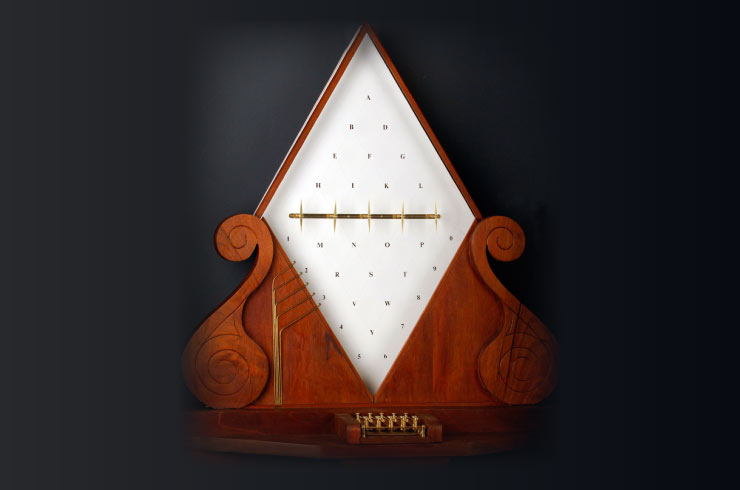
Five-needle Telegraph
Developed by William Fothergill Cooke and Charles Wheatstone in 1837, the five-needle telegraph was installed on the Great Western Railway line between West Drayton and Paddington station, and was the first commercial electric telegraph in the world. It used needles to point at individual letters to spell out words. Due to the diamond layout of the letters, some had to be left out, like ‘C’, ‘Q’, and ‘Z’.

